Barta Marek
Plant Pathology and Mycology RG
Researcher

Ing. Marek Barta, PhD.
Slovak Academy of Sciences
Institute of Forest Ecology
Plant Pathology & Mycology Research Group
Akademická 2
949 01 Nitra
Phone: +421 376 943 354
Email: marek.barta@savba.sk
Research Interests:My primary research interests are insect pathology and microbial biocontrol of insect pests in forestry and agriculture. I am investigating the biology, ecology, and species diversity of entomopathogenic fungi (Hypocreales, Entomophthorales) in populations of insect pests. I am also interested in testing entomopathogenic fungi from the genus Beauveria and Metarhizium against invasive insect species in forest habitats. Another area of research that interests me is the impact of climate change on invasive alien insects in forests.
Education:
- PhD. in Plant protection, Faculty of Agrobiology and Food Resources of Slovak University of Agriculture in Nitra; Thesis: Fungi of the order Entomophthorales infecting aphids in Slovakia (2000-2003)
- Ing. in Crop production, Faculty of Agronomy of Slovak University of Agriculture in Nitra (1995-2000)
Projects:
- VEGA 2/0122/22 – Diversity and pathogenicity of ophiostomatoid fungi in Scots pine stands infested by bark beetles (2022-2025, member of research team)
- APVV-19- 0119 –The potential for Entomophaga maimaiga to regulate gypsy moth Lymantria dispar (L.) in Slovakia (7/2020-12/2022)
- APVV-19- 0116 – Application of entomopathogenic fungi from the genus Beauveria against invasive insect species (7/2020-12/2022)
- VEGA 2/0062/18 – Ash dieback: the causal agents and disease control strategy (2018-2021, member of research team)
- APVV-16- 0031 Research of alternative methods of conifer seedlings protection against insect pests (7/2017-6/2020)
- APVV-15- 0348 New methods in an integrated forest protection incorporating the use of entomopathogenic fungi (7/2016-6/2019)
- VEGA 2/0025/15 – Endophytic microorganisms in trees and their potential role in stress tolerance enhancement (1/2015-12/2018), principal investigator
- VEGA 2/0052/15 – Functionally important animals in the dynamics of forest ecosystems in new environmental conditions (1/2015-12/2018)
- VEGA 2/0183/14 – Environmental risks of rhododendron cultivation in Mlyňany Arboretum SAS (1/2014-12/2017)
- VEGA 2/0085/09 – Climate changes and prospects of introduced taxa of East-Asian dendroflora in Arboretum Mlynany SAS (01/2009-12/2012), principal investigator
- APVV-0421- 07 New methods of evaluation and mapping of biotic harmful agents in urban greenery (09/2008-12/2010)
- VEGA 2/7166/27 – Phytopatological and entomological evaluation of introduced woody plants in Arboretum Mlynany (01/2007-12/2009), principal investigator
- Bilateral project: Slovakia (IFE)- Taiwan (NSC): Regulation of invasive tree-of- heaven (Ailanthus altissima) by its native pests Eucryptorrhynchus brandti and E. chinensis in the Middle Europe (01/2014-12/2015)
- COST FP1401 – A global network of nurseries as early warning system against alien tree pests (Global Warning) (06/2015-12/2018)
- COST FA1103 – Endophytes in biotechnology and agriculture (03/2012-12/2015)
List of my publications:
ResearchGate
ORCID ID: orcid.org/0000-0003- 2450-1769
SCOPUS Author ID: 7003746265
ResearcherID: B-6226- 2015
2025 |
|
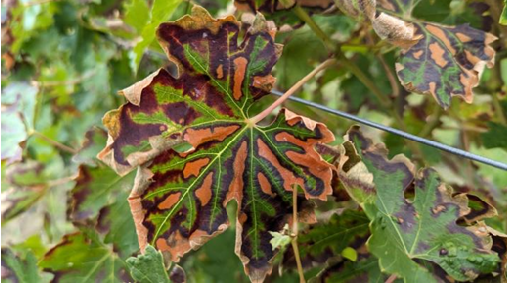 | Janás, M; Ailer, L; Ailer, Š; Selnekovič, A; Kádasi-Horáková, M; Barta, M Journal of microbiology, biotechnology and food sciences, 14 (5), pp. e12174, 2025. @article{Janás2025, title = {Evaluation of yield and wine qualitative parameters from grapevines expressing foliar symptoms of grapevine trunk diseases in Slovak climatic conditions}, author = {M. Janás and L. Ailer and Š. Ailer and A. Selnekovič and M. Kádasi-Horáková and M. Barta }, doi = {https://doi.org/10.55251/jmbfs.12174}, year = {2025}, date = {2025-04-01}, journal = {Journal of microbiology, biotechnology and food sciences}, volume = {14}, number = {5}, pages = {e12174}, abstract = {Grapevine trunk diseases represent a serious threat to viticulture, posing substantial challenges to the sustainability and productivity of vineyards. Fungal pathogens associated with the grapevine trunk diseases complex decompose the wood matter in grapevine trunks, leading to the disruption of vascular tissue integrity and the subsequent disruption of water and nutrient translocation within the plant. The aim of the work was to compare the yield and qualitative parameters of musts and wines from symptomatic and asymptomatic grapevines. The grape originated from the Nitra wine-growing district, from varieties Riesling Italico and Cabernet Sauvignon, aged 17 years, were used. Grapes from symptomatic and asymptomatic grapevines were processed into must and wines. The differences in yield quantity and physicochemical parameters of must and wine were analysed. Fourier transform infrared spectroscopy was used to analyse the physicochemical parameters. To test the statistical significance of the results, the Tukey’s test (p ≤ 0.05) was applied. Symptomatic grapevines of Cabernet Sauvignon exhibited significantly lower cluster weight and yield compared to asymptomatic grapevines, with a decrease of 504.71 g per bush. For Riesling Italico, no significant difference in yield was found. The must from symptomatic grapevines had significantly lower total sugar content, with Cabernet Sauvignon showing a decrease of 51.29 g/L and Riesling Italico a decrease of 23.72 g/L, along with higher acidity in Cabernet Sauvignon (+1.54 g/L). These findings confirm that grapevine trunk diseases exert a detrimental effect on both yield and must quality, with notable variability observed between grape varieties. }, keywords = {}, pubstate = {published}, tppubtype = {article} } Grapevine trunk diseases represent a serious threat to viticulture, posing substantial challenges to the sustainability and productivity of vineyards. Fungal pathogens associated with the grapevine trunk diseases complex decompose the wood matter in grapevine trunks, leading to the disruption of vascular tissue integrity and the subsequent disruption of water and nutrient translocation within the plant. The aim of the work was to compare the yield and qualitative parameters of musts and wines from symptomatic and asymptomatic grapevines. The grape originated from the Nitra wine-growing district, from varieties Riesling Italico and Cabernet Sauvignon, aged 17 years, were used. Grapes from symptomatic and asymptomatic grapevines were processed into must and wines. The differences in yield quantity and physicochemical parameters of must and wine were analysed. Fourier transform infrared spectroscopy was used to analyse the physicochemical parameters. To test the statistical significance of the results, the Tukey’s test (p ≤ 0.05) was applied. Symptomatic grapevines of Cabernet Sauvignon exhibited significantly lower cluster weight and yield compared to asymptomatic grapevines, with a decrease of 504.71 g per bush. For Riesling Italico, no significant difference in yield was found. The must from symptomatic grapevines had significantly lower total sugar content, with Cabernet Sauvignon showing a decrease of 51.29 g/L and Riesling Italico a decrease of 23.72 g/L, along with higher acidity in Cabernet Sauvignon (+1.54 g/L). These findings confirm that grapevine trunk diseases exert a detrimental effect on both yield and must quality, with notable variability observed between grape varieties. |
2024 |
|
 | Pastirčáková, K; Baková, K; Adamčíková, K; Barta, M; Lalík, M; Pavlík, M; Kunca, A; Galko, J; Pastirčák, M Fungi associated with ambrosia beetle Xylosandrus germanus in Slovakia Journal Article Biologia, 79 (8), pp. 2387-2400, 2024, ISSN: 0006-3088. @article{Pastirčáková2024, title = {Fungi associated with ambrosia beetle \textit{Xylosandrus germanus} in Slovakia}, author = {K. Pastirčáková and K. Baková and K. Adamčíková and M. Barta and M. Lalík and M. Pavlík and A. Kunca and J. Galko and M. Pastirčák}, doi = {10.1007/s11756-024-01712-7}, issn = {0006-3088}, year = {2024}, date = {2024-08-21}, journal = {Biologia}, volume = {79}, number = {8}, pages = {2387-2400}, abstract = {The black timber bark beetle (Xylosandrus germanus) is a strongly invasive ambrosia beetle and an important forest pest in Slovakia. This pest is closely associated with symbiotic fungi used as its food source. We investigated the fungi associated with X. germanus adults in Slovakia. In this study, Beauveria bassiana, B. pseudobassiana, Clonostachys rosea, Fusarium oxysporum, Ophiostoma quercus, Phaeoacremonium scolyti, and Talaromyces amestolkiae were isolated and identified by morphological and molecular analyses. The fungus Ophiostoma quercus was most frequently isolated from living beetles, while the entomopathogenic Beauveria bassiana was the most commonly isolated from dead beetles. The morphological descriptions of fungi based on isolates from the surface of X. germanus adults are provided.}, keywords = {}, pubstate = {published}, tppubtype = {article} } The black timber bark beetle (Xylosandrus germanus) is a strongly invasive ambrosia beetle and an important forest pest in Slovakia. This pest is closely associated with symbiotic fungi used as its food source. We investigated the fungi associated with X. germanus adults in Slovakia. In this study, Beauveria bassiana, B. pseudobassiana, Clonostachys rosea, Fusarium oxysporum, Ophiostoma quercus, Phaeoacremonium scolyti, and Talaromyces amestolkiae were isolated and identified by morphological and molecular analyses. The fungus Ophiostoma quercus was most frequently isolated from living beetles, while the entomopathogenic Beauveria bassiana was the most commonly isolated from dead beetles. The morphological descriptions of fungi based on isolates from the surface of X. germanus adults are provided. |
2023 |
|
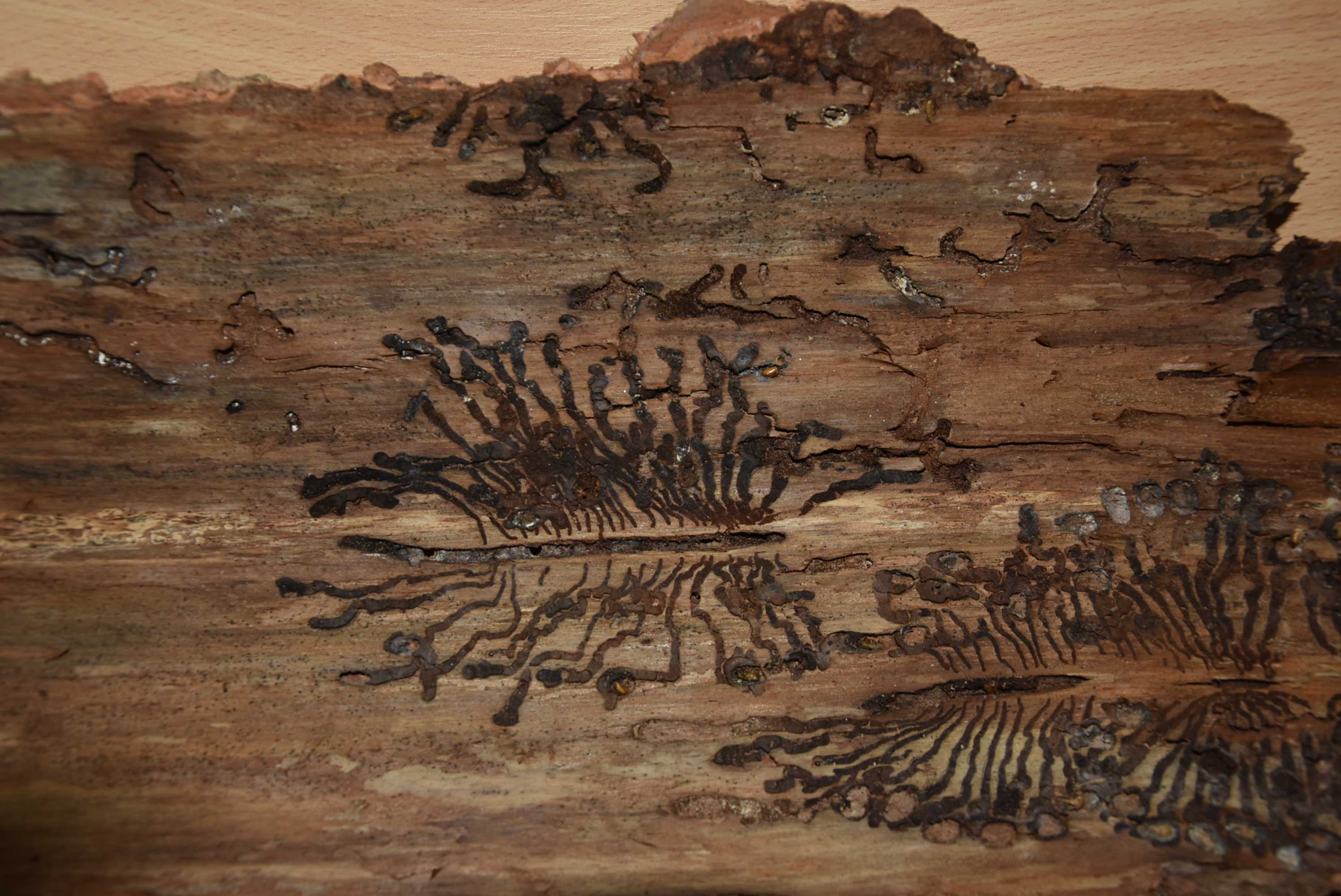 | Takov, Danail; Barta, Marek; Nikolova, Milena; Doychev, Danail; Toshova, Teodora; Ostoich, Peter; Pilarska, Daniela Insecticidal activity of three plant extracts against adult Ips typograpgus L. under laboratory conditions Journal Article Baltic Journal of Coleopterology, 23 (2), pp. 139-158, 2023, ISSN: 1407 – 8619. @article{Takov2023, title = {Insecticidal activity of three plant extracts against adult \textit{Ips typograpgus} L. under laboratory conditions}, author = {Danail Takov and Marek Barta and Milena Nikolova and Danail Doychev and Teodora Toshova and Peter Ostoich and Daniela Pilarska}, url = {https://doi.org/10.59893/bjc.23(2).001}, doi = {10.59893/bjc.23(2).001}, issn = {1407 – 8619}, year = {2023}, date = {2023-12-08}, journal = {Baltic Journal of Coleopterology}, volume = {23}, number = {2}, pages = {139-158}, abstract = {Three plant extracts - Origanum vulgare subsp. hirtum essential oil (EO), Monarda fistulosa EO, and a hexane fraction of Tanacetum cinerariifolium, wеre evaluated and compared regarding their insecticide activity under laboratory conditions against the adults of the European spruce bark beetle, Ips typographus. The viability of I. typographus was affected with all tested plant extracts. The insecticidal effect varied among the extracts and concentrations used. Generally the mortality of beetles increased with the concentration of extracts and a significant positive correlation between the cumulative mortality and the extract concentration was confirmed by Pearson’s correlation analysis (r = 0.910, p = 0.012 for O. vulgare subsp. hirtum, r = 0.937, p = 0.005 for T. cinerariifolium, r = 0.814, p = 0.048 for M. fistulosa). At the highest extract concentration (10%), the total cumulative mortalities reached 98% for O. vulgare subsp. hirtum and T. cinerariifolium extracts at the end of the bioassay (four days after treatment). The exposure of beetles to M. fistulosa extract decreased the survivability of I. typographus the most (15%) and was followed by T. cinerariifolium (38%) and O. vulgare subsp. hirtum (43%). Log-rank test showed no significant difference in the survival probabilities among the extracts. These are the first tests on the insecticidal effect of plant extracts from Tanacetum cineranifolium and Monarda fistulosa against the European spruce bark beetle Ips typographus.}, keywords = {}, pubstate = {published}, tppubtype = {article} } Three plant extracts - Origanum vulgare subsp. hirtum essential oil (EO), Monarda fistulosa EO, and a hexane fraction of Tanacetum cinerariifolium, wеre evaluated and compared regarding their insecticide activity under laboratory conditions against the adults of the European spruce bark beetle, Ips typographus. The viability of I. typographus was affected with all tested plant extracts. The insecticidal effect varied among the extracts and concentrations used. Generally the mortality of beetles increased with the concentration of extracts and a significant positive correlation between the cumulative mortality and the extract concentration was confirmed by Pearson’s correlation analysis (r = 0.910, p = 0.012 for O. vulgare subsp. hirtum, r = 0.937, p = 0.005 for T. cinerariifolium, r = 0.814, p = 0.048 for M. fistulosa). At the highest extract concentration (10%), the total cumulative mortalities reached 98% for O. vulgare subsp. hirtum and T. cinerariifolium extracts at the end of the bioassay (four days after treatment). The exposure of beetles to M. fistulosa extract decreased the survivability of I. typographus the most (15%) and was followed by T. cinerariifolium (38%) and O. vulgare subsp. hirtum (43%). Log-rank test showed no significant difference in the survival probabilities among the extracts. These are the first tests on the insecticidal effect of plant extracts from Tanacetum cineranifolium and Monarda fistulosa against the European spruce bark beetle Ips typographus. |
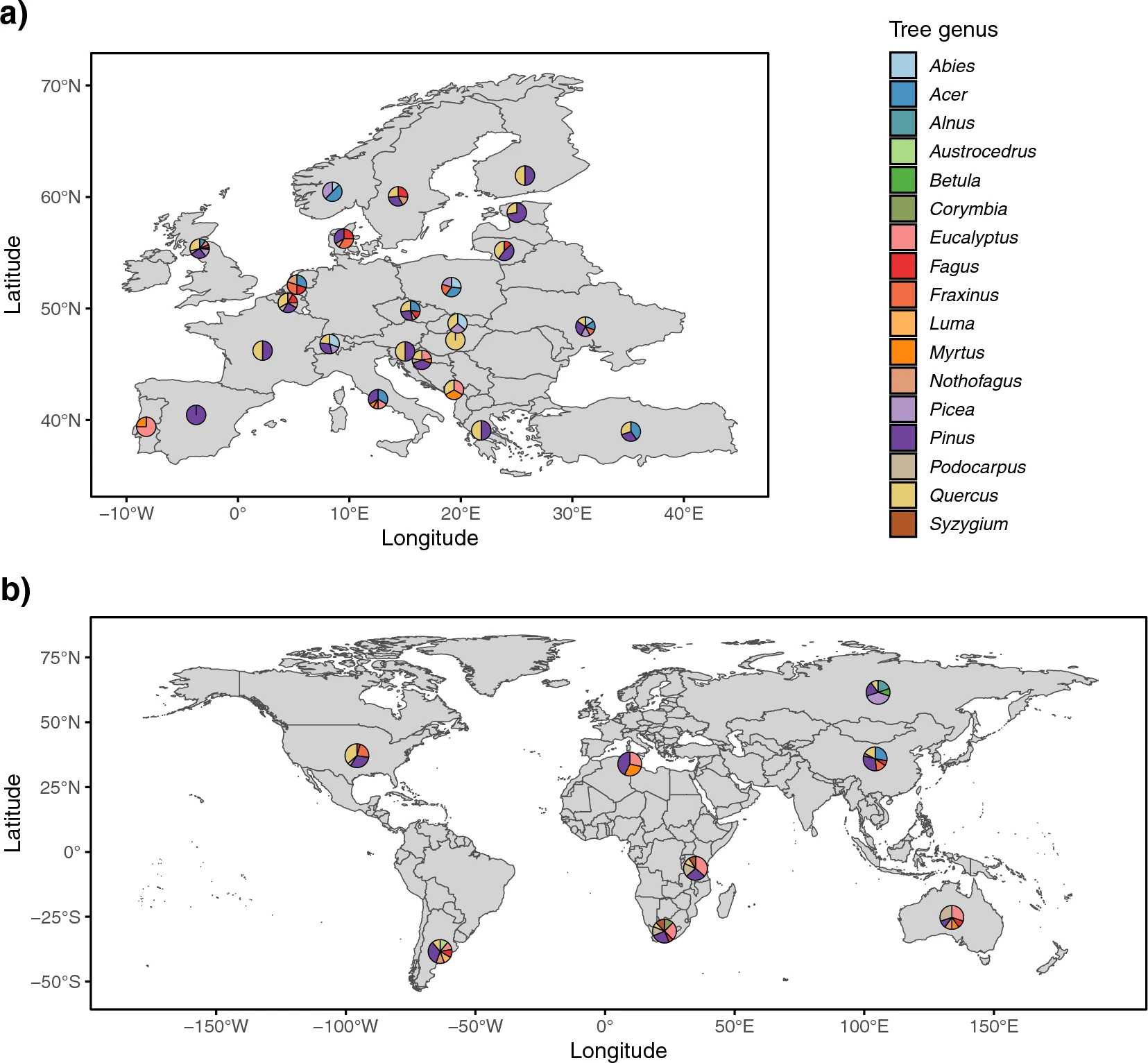 | Franić, Iva; Allan, Eric; Prospero, Simone; Adamson, Kalev; Attorre, Fabio; Auger-Rozenberg, Marie-Anne; Augustin, Sylvie; Avtzis, Dimitrios; Baert, Wim; Barta, Marek; Bauters, Kenneth; Bellahirech, Amani; Boroń, Piotr; Bragança, Helena; Brestovanská, Tereza; Brurberg, May Bente; Burgess, Treena; Burokienė, Daiva; Cleary, Michelle; Corley, Juan; Coyle, David R; Csóka, György; Černý, Karel; Davydenko, Kateryna; de Groot, Maarten; Diez, Julio Javier; Lehtijärvi, Tugba Doğmuş H; Drenkhan, Rein; Edwards, Jacqueline; Elsafy, Mohammed; Eötvös, Csaba Béla; Falko, Roman; Fan, Jianting; Feddern, Nina; Fürjes-Mikó, Ágnes; Gossner, Martin M; Grad, Bartłomiej; Hartmann, Martin; Havrdova, Ludmila; Horáková, Miriam Kádasi; Hrabětová, Markéta; Justesen, Mathias Just; Kacprzyk, Magdalena; Kenis, Marc; Kirichenko, Natalia; Kovač, Marta; Kramarets, Volodymyr; Lacković, Nikola; Lantschner, Maria Victoria; Lazarević, Jelena; Leskiv, Marianna; Li, Hongmei; Madsen, Corrie Lynne; Malumphy, Chris; Matošević, Dinka; Matsiakh, Iryna; May, Tom W; Meffert, Johan; Migliorini, Duccio; Nikolov, Christo; O’Hanlon, Richard; Oskay, Funda; Paap, Trudy; Parpan, Taras; Piškur, Barbara; Ravn, Hans Peter; Richard, John; Ronse, Anne; Roques, Alain; Ruffner, Beat; Santini, Alberto; Sivickis, Karolis; Soliani, Carolina; Talgø, Venche; Tomoshevich, Maria; Uimari, Anne; Ulyshen, Michael; Vettraino, Anna Maria; Villari, Caterina; Wang, Yongjun; Witzell, Johanna; Zlatković, Milica; Eschen, René Climate, host and geography shape insect and fungal communities of trees Journal Article Scientific Reports, 13 , pp. 11570 , 2023, ISSN: 2045-2322. @article{Franić2023, title = {Climate, host and geography shape insect and fungal communities of trees}, author = {Iva Franić and Eric Allan and Simone Prospero and Kalev Adamson and Fabio Attorre and Marie-Anne Auger-Rozenberg and Sylvie Augustin and Dimitrios Avtzis and Wim Baert and Marek Barta and Kenneth Bauters and Amani Bellahirech and Piotr Boroń and Helena Bragança and Tereza Brestovanská and May Bente Brurberg and Treena Burgess and Daiva Burokienė and Michelle Cleary and Juan Corley and David R. Coyle and György Csóka and Karel Černý and Kateryna Davydenko and Maarten de Groot and Julio Javier Diez and H. Tugba Doğmuş Lehtijärvi and Rein Drenkhan and Jacqueline Edwards and Mohammed Elsafy and Csaba Béla Eötvös and Roman Falko and Jianting Fan and Nina Feddern and Ágnes Fürjes-Mikó and Martin M. Gossner and Bartłomiej Grad and Martin Hartmann and Ludmila Havrdova and Miriam Kádasi Horáková and Markéta Hrabětová and Mathias Just Justesen and Magdalena Kacprzyk and Marc Kenis and Natalia Kirichenko and Marta Kovač and Volodymyr Kramarets and Nikola Lacković and Maria Victoria Lantschner and Jelena Lazarević and Marianna Leskiv and Hongmei Li and Corrie Lynne Madsen and Chris Malumphy and Dinka Matošević and Iryna Matsiakh and Tom W. May and Johan Meffert and Duccio Migliorini and Christo Nikolov and Richard O’Hanlon and Funda Oskay and Trudy Paap and Taras Parpan and Barbara Piškur and Hans Peter Ravn and John Richard and Anne Ronse and Alain Roques and Beat Ruffner and Alberto Santini and Karolis Sivickis and Carolina Soliani and Venche Talgø and Maria Tomoshevich and Anne Uimari and Michael Ulyshen and Anna Maria Vettraino and Caterina Villari and Yongjun Wang and Johanna Witzell and Milica Zlatković and René Eschen}, url = {https://www.nature.com/articles/s41598-023-36795-w}, doi = {10.1038/s41598-023-36795-w}, issn = {2045-2322}, year = {2023}, date = {2023-07-18}, journal = {Scientific Reports}, volume = {13}, pages = {11570 }, abstract = {Non-native pests, climate change, and their interactions are likely to alter relationships between trees and tree-associated organisms with consequences for forest health. To understand and predict such changes, factors structuring tree-associated communities need to be determined. Here, we analysed the data consisting of records of insects and fungi collected from dormant twigs from 155 tree species at 51 botanical gardens or arboreta in 32 countries. Generalized dissimilarity models revealed similar relative importance of studied climatic, host-related and geographic factors on differences in tree-associated communities. Mean annual temperature, phylogenetic distance between hosts and geographic distance between locations were the major drivers of dissimilarities. The increasing importance of high temperatures on differences in studied communities indicate that climate change could affect tree-associated organisms directly and indirectly through host range shifts. Insect and fungal communities were more similar between closely related vs. distant hosts suggesting that host range shifts may facilitate the emergence of new pests. Moreover, dissimilarities among tree-associated communities increased with geographic distance indicating that human-mediated transport may serve as a pathway of the introductions of new pests. The results of this study highlight the need to limit the establishment of tree pests and increase the resilience of forest ecosystems to changes in climate.}, keywords = {}, pubstate = {published}, tppubtype = {article} } Non-native pests, climate change, and their interactions are likely to alter relationships between trees and tree-associated organisms with consequences for forest health. To understand and predict such changes, factors structuring tree-associated communities need to be determined. Here, we analysed the data consisting of records of insects and fungi collected from dormant twigs from 155 tree species at 51 botanical gardens or arboreta in 32 countries. Generalized dissimilarity models revealed similar relative importance of studied climatic, host-related and geographic factors on differences in tree-associated communities. Mean annual temperature, phylogenetic distance between hosts and geographic distance between locations were the major drivers of dissimilarities. The increasing importance of high temperatures on differences in studied communities indicate that climate change could affect tree-associated organisms directly and indirectly through host range shifts. Insect and fungal communities were more similar between closely related vs. distant hosts suggesting that host range shifts may facilitate the emergence of new pests. Moreover, dissimilarities among tree-associated communities increased with geographic distance indicating that human-mediated transport may serve as a pathway of the introductions of new pests. The results of this study highlight the need to limit the establishment of tree pests and increase the resilience of forest ecosystems to changes in climate. |
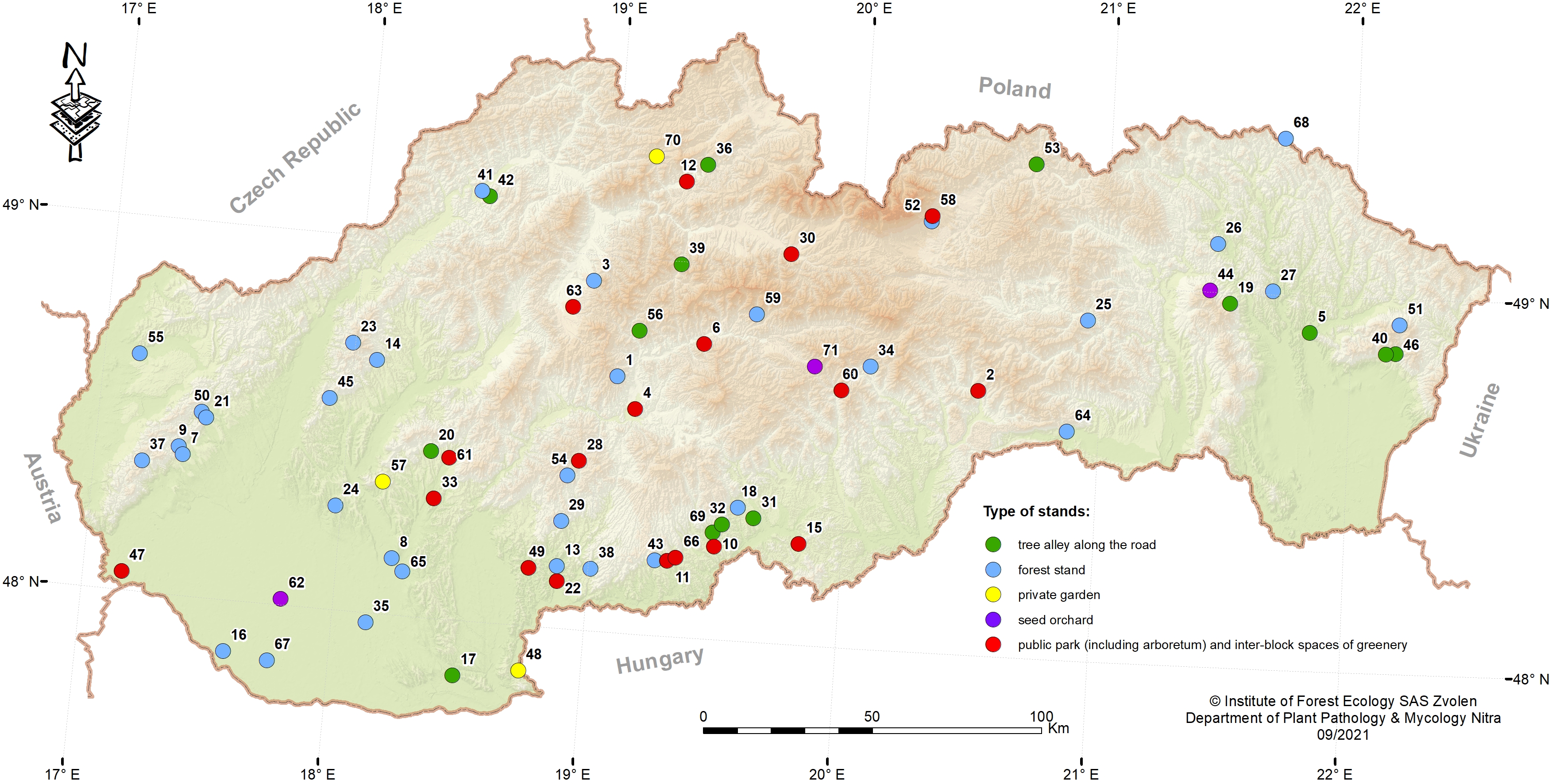 | Kádasi-Horáková, M; Barta, M; Adamčíková, K; Ostrovský, R; Pastirčáková, K Hymenoscyphus fraxineus on Fraxinus excelsior in Slovakia: distribution and mating types Journal Article Biologia, 78 (5), pp. 1219-1230, 2023, ISSN: 0006-3088. @article{Kádasi-Horáková2023, title = {\textit{Hymenoscyphus fraxineus} on \textit{Fraxinus excelsior} in Slovakia: distribution and mating types}, author = {M. Kádasi-Horáková and M. Barta and K. Adamčíková and R. Ostrovský and K. Pastirčáková}, doi = {10.1007/s11756-022-01023-9}, issn = {0006-3088}, year = {2023}, date = {2023-05-10}, journal = {Biologia}, volume = {78}, number = {5}, pages = {1219-1230}, abstract = {Hymenoscyphus fraxineus causes ash dieback in Europe and threatens the future existence of Fraxinus excelsior in large parts of its natural distribution range. In this study, we report the first documented distribution of the pathogen on the most common ash species F. excelsior in Slovakia, identified molecularly using species-specific primers and based on sequencing of the ITS region of rDNA. Analysis of the mating type genes of H. fraxineus isolates revealed the presence of both mating types in Slovakia. Hymenoscyphus fraxineus-positive trees were recorded in 70 localities with different types of management in different parts of the country, mainly in forest stands. The results indicate the widespread distribution of H. fraxineus across the entire country, wherever the host is present.}, keywords = {}, pubstate = {published}, tppubtype = {article} } Hymenoscyphus fraxineus causes ash dieback in Europe and threatens the future existence of Fraxinus excelsior in large parts of its natural distribution range. In this study, we report the first documented distribution of the pathogen on the most common ash species F. excelsior in Slovakia, identified molecularly using species-specific primers and based on sequencing of the ITS region of rDNA. Analysis of the mating type genes of H. fraxineus isolates revealed the presence of both mating types in Slovakia. Hymenoscyphus fraxineus-positive trees were recorded in 70 localities with different types of management in different parts of the country, mainly in forest stands. The results indicate the widespread distribution of H. fraxineus across the entire country, wherever the host is present. |
2022 |
|
 | Barta, M; Pastirčáková, K; Ostrovský, R; Kobza, M; Kádasi-Horáková, M Culturable endophytic fungi in Fraxinus excelsior and their interactions with Hymenoscyphus fraxineus Journal Article Forests, 13 (7), pp. 1-23, Article no. 1098, 2022, ISSN: 1999-4907. @article{Barta2022b, title = {Culturable endophytic fungi in \textit{Fraxinus excelsior} and their interactions with \textit{Hymenoscyphus fraxineus}}, author = {M. Barta and K. Pastirčáková and R. Ostrovský and M. Kobza and M. Kádasi-Horáková}, doi = {10.3390/f13071098}, issn = {1999-4907}, year = {2022}, date = {2022-07-13}, journal = {Forests}, volume = {13}, number = {7}, pages = {1-23, Article no. 1098}, abstract = {The species diversity of culturable endophytic fungi was studied in the leaves and twigs of symptomatic and asymptomatic Fraxinus excelsior trees. Endophytic mycobiota was dominated by Ascomycota species, with Pleosporales (44.17%) and Diaporthales (23.79%) endophytes being the most frequently observed in the tree samples. The number of endophytic isolates and species richness varied depending on the sampling date (May and October) and tissue location. Of the 54 species identified based on ITS sequences, 14 were classified as dominant. The most frequently isolated species were Diaporthe eres, followed by Alternaria alternata, Dothiorella gregaria, and Fraxinicola fraxini. The inhibitory effect of 41 species (75 isolates) of endophytes on the radial growth of a Hymenoscyphus fraxineus isolate was studied under in vitro conditions (dual cultures). The radial growth of H. fraxineus was the most inhibited by four endophytic fungi from twigs (Fusarium lateritium, Didymella aliena, Didymella macrostoma, and Dothiorella gregaria). The inhibitory effect of the four isolates was also studied under in planta conditions. The isolates artificially inoculated into the trunks of ash trees reduced the length of necroses formed by H. fraxineus co-inoculated in the same trunks. This effect depended on the isolate, and the inhibition was most prominent only on trunks inoculated with F. lateritium and D. aliena. Although the total length of necrotic lesions formed by the H. fraxineus infection was shorter in the ash trunks co-inoculated with the endophytes, the difference was not significant.}, keywords = {}, pubstate = {published}, tppubtype = {article} } The species diversity of culturable endophytic fungi was studied in the leaves and twigs of symptomatic and asymptomatic Fraxinus excelsior trees. Endophytic mycobiota was dominated by Ascomycota species, with Pleosporales (44.17%) and Diaporthales (23.79%) endophytes being the most frequently observed in the tree samples. The number of endophytic isolates and species richness varied depending on the sampling date (May and October) and tissue location. Of the 54 species identified based on ITS sequences, 14 were classified as dominant. The most frequently isolated species were Diaporthe eres, followed by Alternaria alternata, Dothiorella gregaria, and Fraxinicola fraxini. The inhibitory effect of 41 species (75 isolates) of endophytes on the radial growth of a Hymenoscyphus fraxineus isolate was studied under in vitro conditions (dual cultures). The radial growth of H. fraxineus was the most inhibited by four endophytic fungi from twigs (Fusarium lateritium, Didymella aliena, Didymella macrostoma, and Dothiorella gregaria). The inhibitory effect of the four isolates was also studied under in planta conditions. The isolates artificially inoculated into the trunks of ash trees reduced the length of necroses formed by H. fraxineus co-inoculated in the same trunks. This effect depended on the isolate, and the inhibition was most prominent only on trunks inoculated with F. lateritium and D. aliena. Although the total length of necrotic lesions formed by the H. fraxineus infection was shorter in the ash trunks co-inoculated with the endophytes, the difference was not significant. |
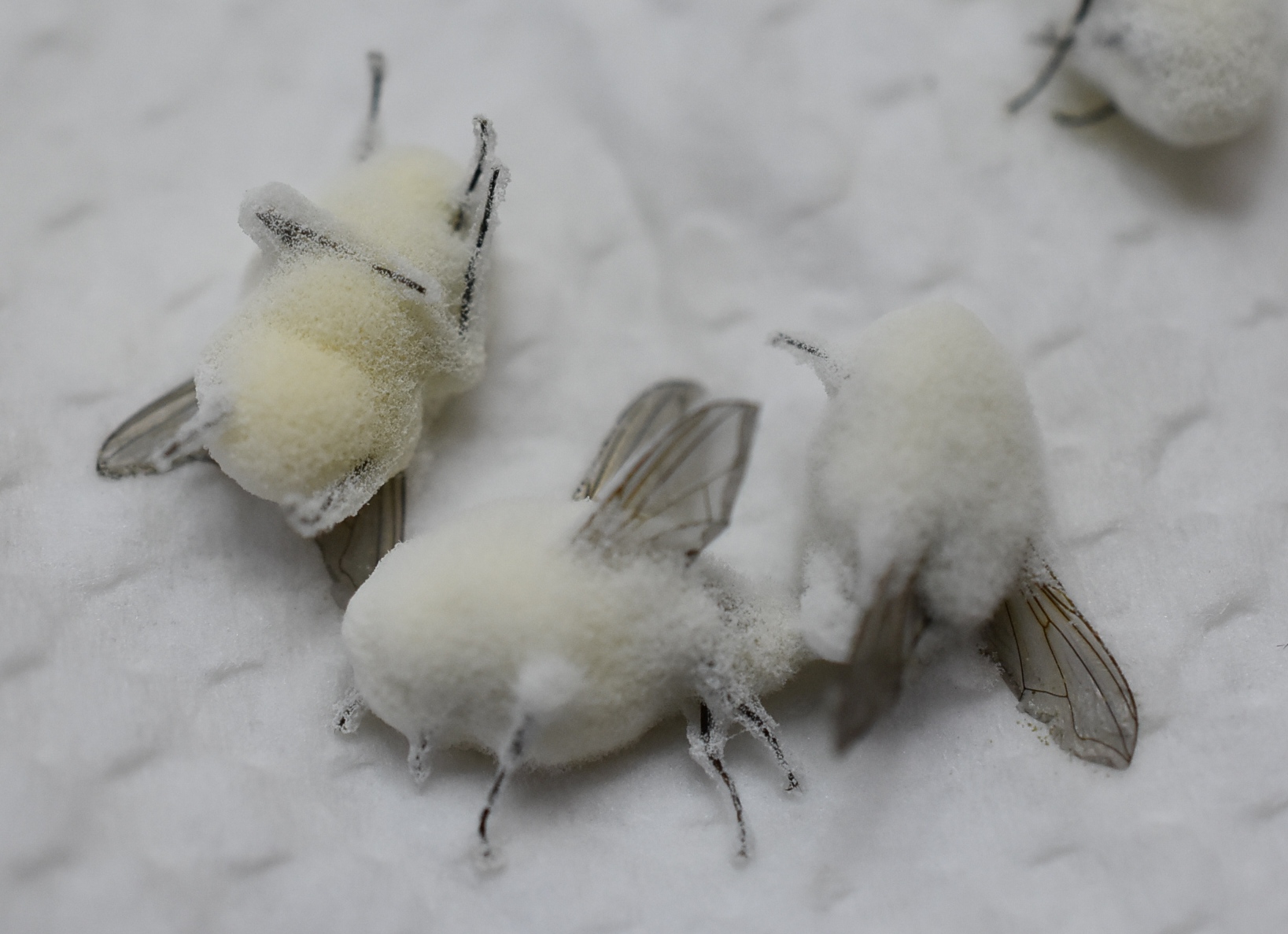 | Barta, Marek; Semelbauer, Marek; Mangová, Barbara; Kozánek, Milan Entomopathogenic fungi associated with Stomoxys calcitrans in Slovakia and efficacy of local fungal strains against the stable fly Journal Article Acta fytotechnica et zootechnica, 25 (2), pp. 97-108, 2022, ISSN: ISSN 1336-9245. @article{Barta2022, title = {Entomopathogenic fungi associated with Stomoxys calcitrans in Slovakia and efficacy of local fungal strains against the stable fly}, author = {Marek Barta and Marek Semelbauer and Barbara Mangová and Milan Kozánek}, doi = {https://doi.org/10.15414/afz.2022.25.02.97-108}, issn = {ISSN 1336-9245}, year = {2022}, date = {2022-06-30}, journal = {Acta fytotechnica et zootechnica}, volume = {25}, number = {2}, pages = {97-108}, abstract = {The stable fly, Stomoxys calcitrans, is the most important ectoparasite of livestock throughout the world. Entomopathogenic fungi are natural antagonists of stable flies with the potential to be used as biocontrol agents in integrated management programmes of this pest. The prevalence and species diversity of entomopathogenic fungi in stable fly populations were documented on a dairy cattle farm in south-western Slovakia. The prevalence of fungal infection was low and the maximum percentage of infected flies reached 2.72% during May–October in 2016. Three Beauveria species were identified from infected flies, B. bassiana, B. pseudobassiana and B. brongniartii. Beauveria pseudobassiana and B. brongniartii are reported from S. calcitrans for the first time. In laboratory tests, the pathogenicity of four entomopathogenic fungi B. bassiana, B. pseudobassiana, M. anisopliae and Isaria fumosorosea against adult stable flies was compared. The flies were susceptible to infection by the fungi and the most virulent isolate of B. bassiana (IKEP10) was selected for spore formulation testing and field trials. We tested three types of spore formulations and the aqueous spore suspension was more effective against stable flies than spores formulated in the powder or oil suspension. Repeated treatments of the interior of the stable with B. bassiana spores at fortnightly intervals during June–August resulted in a 10 times higher prevalence of fungal infection in the stable fly population compared with the untreated stable, but the treatments did not effectively reduce the fly population. The selected B. bassiana isolate may represent an interesting tool in the biocontrol of stable fly populations, but further experiments are needed to design an appropriate formulation and enhance its efficacy.}, keywords = {}, pubstate = {published}, tppubtype = {article} } The stable fly, Stomoxys calcitrans, is the most important ectoparasite of livestock throughout the world. Entomopathogenic fungi are natural antagonists of stable flies with the potential to be used as biocontrol agents in integrated management programmes of this pest. The prevalence and species diversity of entomopathogenic fungi in stable fly populations were documented on a dairy cattle farm in south-western Slovakia. The prevalence of fungal infection was low and the maximum percentage of infected flies reached 2.72% during May–October in 2016. Three Beauveria species were identified from infected flies, B. bassiana, B. pseudobassiana and B. brongniartii. Beauveria pseudobassiana and B. brongniartii are reported from S. calcitrans for the first time. In laboratory tests, the pathogenicity of four entomopathogenic fungi B. bassiana, B. pseudobassiana, M. anisopliae and Isaria fumosorosea against adult stable flies was compared. The flies were susceptible to infection by the fungi and the most virulent isolate of B. bassiana (IKEP10) was selected for spore formulation testing and field trials. We tested three types of spore formulations and the aqueous spore suspension was more effective against stable flies than spores formulated in the powder or oil suspension. Repeated treatments of the interior of the stable with B. bassiana spores at fortnightly intervals during June–August resulted in a 10 times higher prevalence of fungal infection in the stable fly population compared with the untreated stable, but the treatments did not effectively reduce the fly population. The selected B. bassiana isolate may represent an interesting tool in the biocontrol of stable fly populations, but further experiments are needed to design an appropriate formulation and enhance its efficacy. |
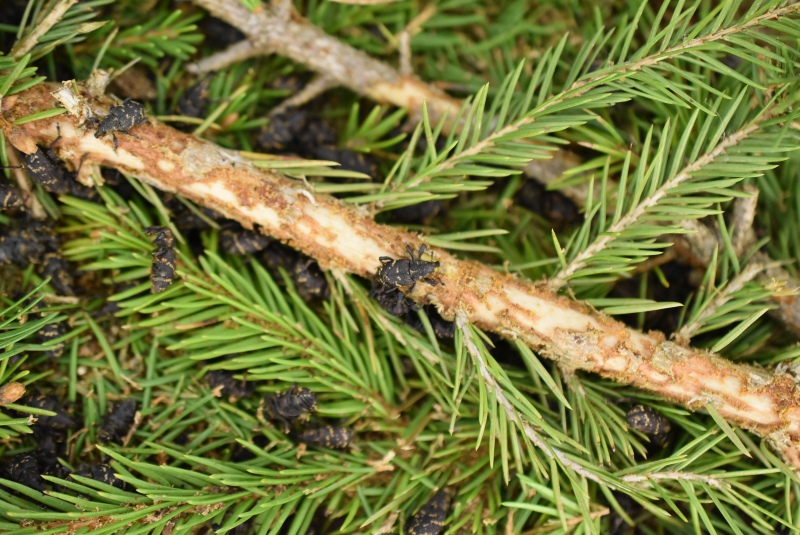 | Galko, Juraj; Lalík, Michal; Rell, Slavomír; Nikolov, Christo; Barta, Marek; Pittner, Ján; Hyblerová, Silvia; Zúbrik, Milan; Kunca, Andrej; Vakula, Jozef; Gubka, Andrej; Holuša, Jaroslav Comprehensive comparison of treatments for controlling the large pine weevil (Hylobius abietis) in Central Europe Journal Article Scientific Reports, 12 (9673), pp. 1-15, 2022, ISBN: 2045-2322. @article{Galko2022, title = {Comprehensive comparison of treatments for controlling the large pine weevil (Hylobius abietis) in Central Europe}, author = {Juraj Galko and Michal Lalík and Slavomír Rell and Christo Nikolov and Marek Barta and Ján Pittner and Silvia Hyblerová and Milan Zúbrik and Andrej Kunca and Jozef Vakula and Andrej Gubka and Jaroslav Holuša}, doi = {https://doi.org/10.1038/s41598-022-13729-6}, isbn = {2045-2322}, year = {2022}, date = {2022-06-11}, journal = {Scientific Reports}, volume = {12}, number = {9673}, pages = {1-15}, abstract = {Adults of the large pine weevil (Hylobius abietis) cause serious damage to coniferous seedlings and are among the most important forest pests in Europe. Seedling protection by chemicals is gradually being restricted or banned for environmental reasons, and non-chemical alternatives are therefore needed. In this 3-year study, we compared the following five treatments for protecting Norway spruce seedlings against H. abietis in the Central European mountains where the weevil is especially abundant: alpha-cypermethrin sprays (the only chemical treatment); coating with sprayed glue (Vermifix); wax coating with C and F types (Norsk Wax); and physical protection with collars. The same block design was set up at a clear-cut site and at a nursery site to compare seedling mortality and wax quality under “wild conditions” with pests and under “ideal conditions” without pests. Repeated application of alpha-cypermethrin was the most effective and least expensive method to protect seedlings against H. abietis. Among the four non-chemical methods, repeated application of glue was the most effective. Because collars were moderately effective but not cost-effective, we do not recommend the use of collars. Wax was inexpensive and environmentally safe but protected seedlings for only 1 year; the newer F type of wax performed better than the C type of wax, and perhaps the F type can be improved. In general we found that seedlings at sites with high numbers of H. abietis require protection for at least 3 years. We conclude by providing an overview of all methods currently available for managing H. abietis in forests.}, keywords = {}, pubstate = {published}, tppubtype = {article} } Adults of the large pine weevil (Hylobius abietis) cause serious damage to coniferous seedlings and are among the most important forest pests in Europe. Seedling protection by chemicals is gradually being restricted or banned for environmental reasons, and non-chemical alternatives are therefore needed. In this 3-year study, we compared the following five treatments for protecting Norway spruce seedlings against H. abietis in the Central European mountains where the weevil is especially abundant: alpha-cypermethrin sprays (the only chemical treatment); coating with sprayed glue (Vermifix); wax coating with C and F types (Norsk Wax); and physical protection with collars. The same block design was set up at a clear-cut site and at a nursery site to compare seedling mortality and wax quality under “wild conditions” with pests and under “ideal conditions” without pests. Repeated application of alpha-cypermethrin was the most effective and least expensive method to protect seedlings against H. abietis. Among the four non-chemical methods, repeated application of glue was the most effective. Because collars were moderately effective but not cost-effective, we do not recommend the use of collars. Wax was inexpensive and environmentally safe but protected seedlings for only 1 year; the newer F type of wax performed better than the C type of wax, and perhaps the F type can be improved. In general we found that seedlings at sites with high numbers of H. abietis require protection for at least 3 years. We conclude by providing an overview of all methods currently available for managing H. abietis in forests. |
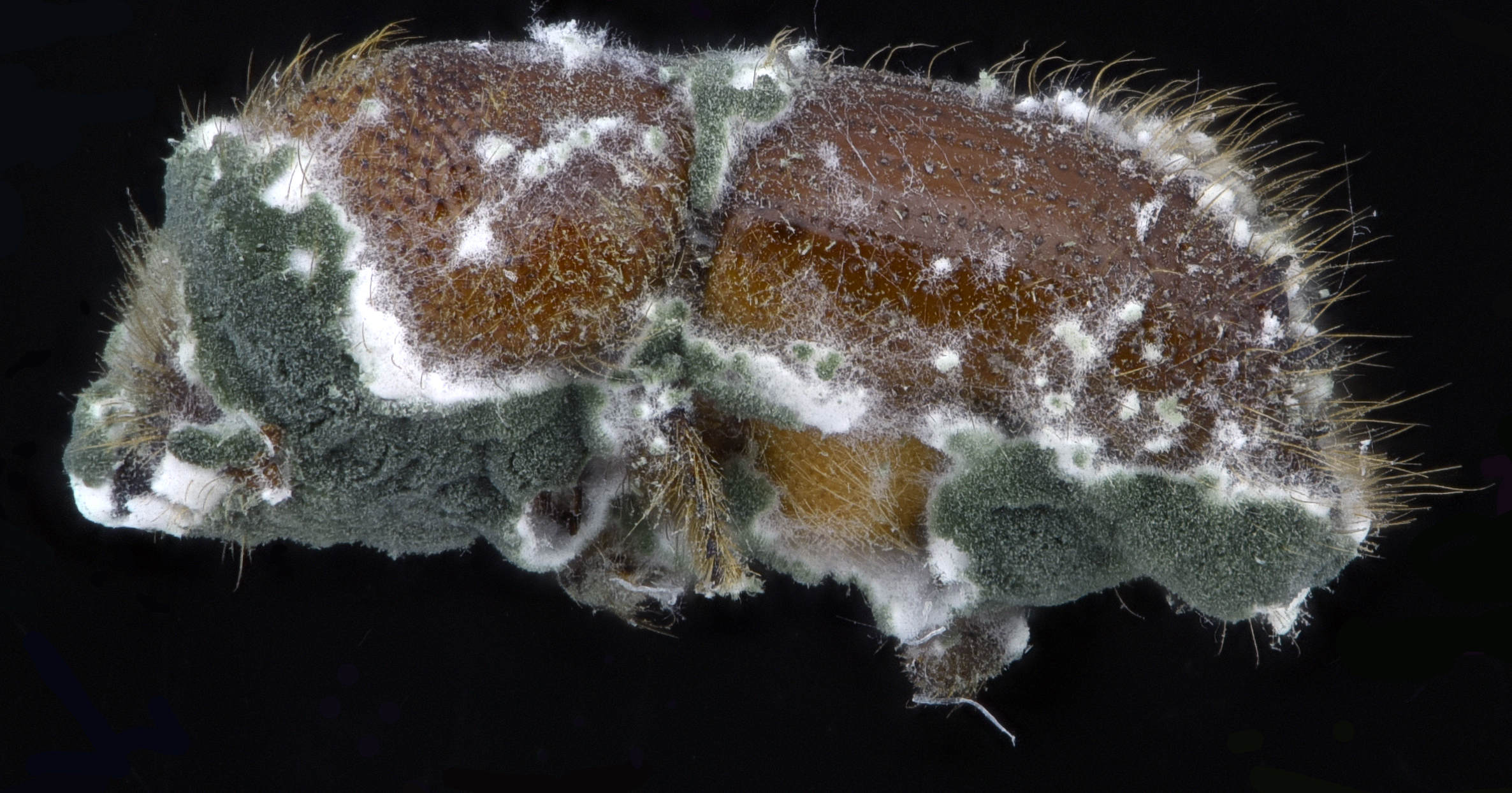 | Takov, Danail; Barta, Marek; Toshova, Teodora; Doychev, Danail; Pilarska, Daniela On the pathogenicity of Metarhizium pemphigi against Ips typographus L. Journal Article Proceedings of the Bulgarian Academy of Sciences, 75 (4), pp. 554-560, 2022, ISSN: 1310–1331. @article{Takov2022, title = {On the pathogenicity of Metarhizium pemphigi against Ips typographus L.}, author = {Danail Takov and Marek Barta and Teodora Toshova and Danail Doychev and Daniela Pilarska}, doi = {10.7546/CRABS.2022.04.10}, issn = {1310–1331}, year = {2022}, date = {2022-05-02}, journal = {Proceedings of the Bulgarian Academy of Sciences}, volume = {75}, number = {4}, pages = {554-560}, abstract = {Efficacy of entomopathogenic fungus Metarhizium pemphigi was evaluated against Ips typographus adults in a laboratory bioassay for the first time. A series of four conidial concentrations (2×104–2×107 conidia/ml) were used. The cumulative mortality caused by M. pemphigi varied between 75% and 100% ten days post-treatment, with LC50 value of 2.9×103 conidia/ml and LC90 value of 6.4×104 conidia/ml. The median lethal time (LT50) of treated beetles depended on conidial concentrations and ranged from 1.78 to 5.98 days. Pathogenicity of M. pemphigi was reported for the first time and the tested strain was found to be promising for further evaluation in terms of management options against the spruce bark beetle.}, keywords = {}, pubstate = {published}, tppubtype = {article} } Efficacy of entomopathogenic fungus Metarhizium pemphigi was evaluated against Ips typographus adults in a laboratory bioassay for the first time. A series of four conidial concentrations (2×104–2×107 conidia/ml) were used. The cumulative mortality caused by M. pemphigi varied between 75% and 100% ten days post-treatment, with LC50 value of 2.9×103 conidia/ml and LC90 value of 6.4×104 conidia/ml. The median lethal time (LT50) of treated beetles depended on conidial concentrations and ranged from 1.78 to 5.98 days. Pathogenicity of M. pemphigi was reported for the first time and the tested strain was found to be promising for further evaluation in terms of management options against the spruce bark beetle. |
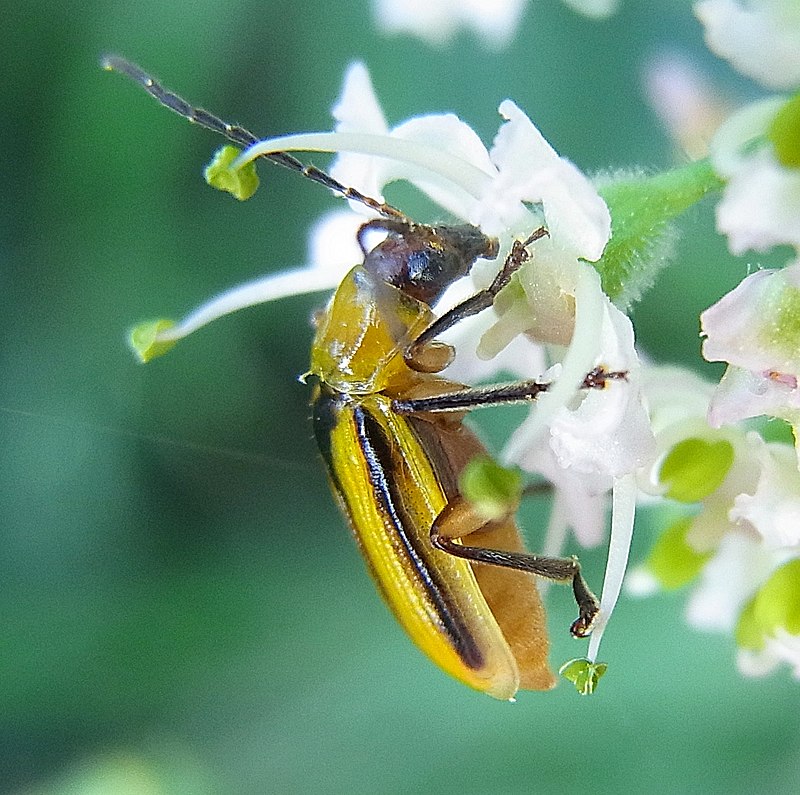 | Toshova, Teodora; Velchev, Dimitar; Barta, Marek; Takov, Danail; Todorov, Ivaylo; Pilarska, Daniela; Tóth, Miklós; Berkov, Strahil; Nikolova, Milena Insecticide activity of Greek oregano essential oil and entomopathogenic fungus Metarhizium pemphigi against Diabrotica virgifera virgifera LeConte Journal Article Forthcoming Cereal Research Communications, Forthcoming, ISSN: 1788-9170. @article{Toshova2022, title = {Insecticide activity of Greek oregano essential oil and entomopathogenic fungus Metarhizium pemphigi against Diabrotica virgifera virgifera LeConte}, author = {Teodora Toshova and Dimitar Velchev and Marek Barta and Danail Takov and Ivaylo Todorov and Daniela Pilarska and Miklós Tóth and Strahil Berkov and Milena Nikolova}, doi = {10.1007/s42976-022-00266-1}, issn = {1788-9170}, year = {2022}, date = {2022-04-08}, journal = {Cereal Research Communications}, abstract = {The western corn rootworm (WCR), Diabrotica virgifera virgifera, is an invasive alien species and an important pest of maize in Europe. The insecticide potential of Greek oregano, Origanum vulgare subsp. hirtum, essential oil (EO) and the entomopathogenic fungus Metarhizium pemphigi were evaluated against WCR adults in laboratory conditions as alternative control agents. Pure undissolved Greek oregano EO applied at a volume of 3, 5 and 10 µl caused 97–100% mean corrected mortality of the test individuals with a rapid lethal effect. Treatment of WCR with four concentrations of EO (0.01, 0.1, 1 and 10 µl/ml) showed a strong concentration–time effect. Mortality rate increased with increasing concentration and exposure time. The median lethal concentration LC50 was 0.03 µl/ml. The time needed for Greek oregano EO to cause LT50 of D. v. virgifera ranged from 17.95 days for the lowest concentration (0.01 µl/ml) to 90 min for the highest concentration (10 µl/ml). Metarhizium pemphigi, which was tested in five conidia concentrations (2 × 103–2 × 107 conidia/ml), showed relatively lower effectiveness against D. v. virgifera adults. At the end of the bioassay (ten days post-treatment), the mean corrected mortality of the test specimens varied from 14 to 73%. LC50 was 3.3 × 106 conidia/ml. The results showed that Greek oregano EO had a bioinsecticidal effect against WCR adults at low concentrations and they are a basis for further investigations on the EO as an environmentally friendly alternative to chemical insecticides.}, keywords = {}, pubstate = {forthcoming}, tppubtype = {article} } The western corn rootworm (WCR), Diabrotica virgifera virgifera, is an invasive alien species and an important pest of maize in Europe. The insecticide potential of Greek oregano, Origanum vulgare subsp. hirtum, essential oil (EO) and the entomopathogenic fungus Metarhizium pemphigi were evaluated against WCR adults in laboratory conditions as alternative control agents. Pure undissolved Greek oregano EO applied at a volume of 3, 5 and 10 µl caused 97–100% mean corrected mortality of the test individuals with a rapid lethal effect. Treatment of WCR with four concentrations of EO (0.01, 0.1, 1 and 10 µl/ml) showed a strong concentration–time effect. Mortality rate increased with increasing concentration and exposure time. The median lethal concentration LC50 was 0.03 µl/ml. The time needed for Greek oregano EO to cause LT50 of D. v. virgifera ranged from 17.95 days for the lowest concentration (0.01 µl/ml) to 90 min for the highest concentration (10 µl/ml). Metarhizium pemphigi, which was tested in five conidia concentrations (2 × 103–2 × 107 conidia/ml), showed relatively lower effectiveness against D. v. virgifera adults. At the end of the bioassay (ten days post-treatment), the mean corrected mortality of the test specimens varied from 14 to 73%. LC50 was 3.3 × 106 conidia/ml. The results showed that Greek oregano EO had a bioinsecticidal effect against WCR adults at low concentrations and they are a basis for further investigations on the EO as an environmentally friendly alternative to chemical insecticides. |
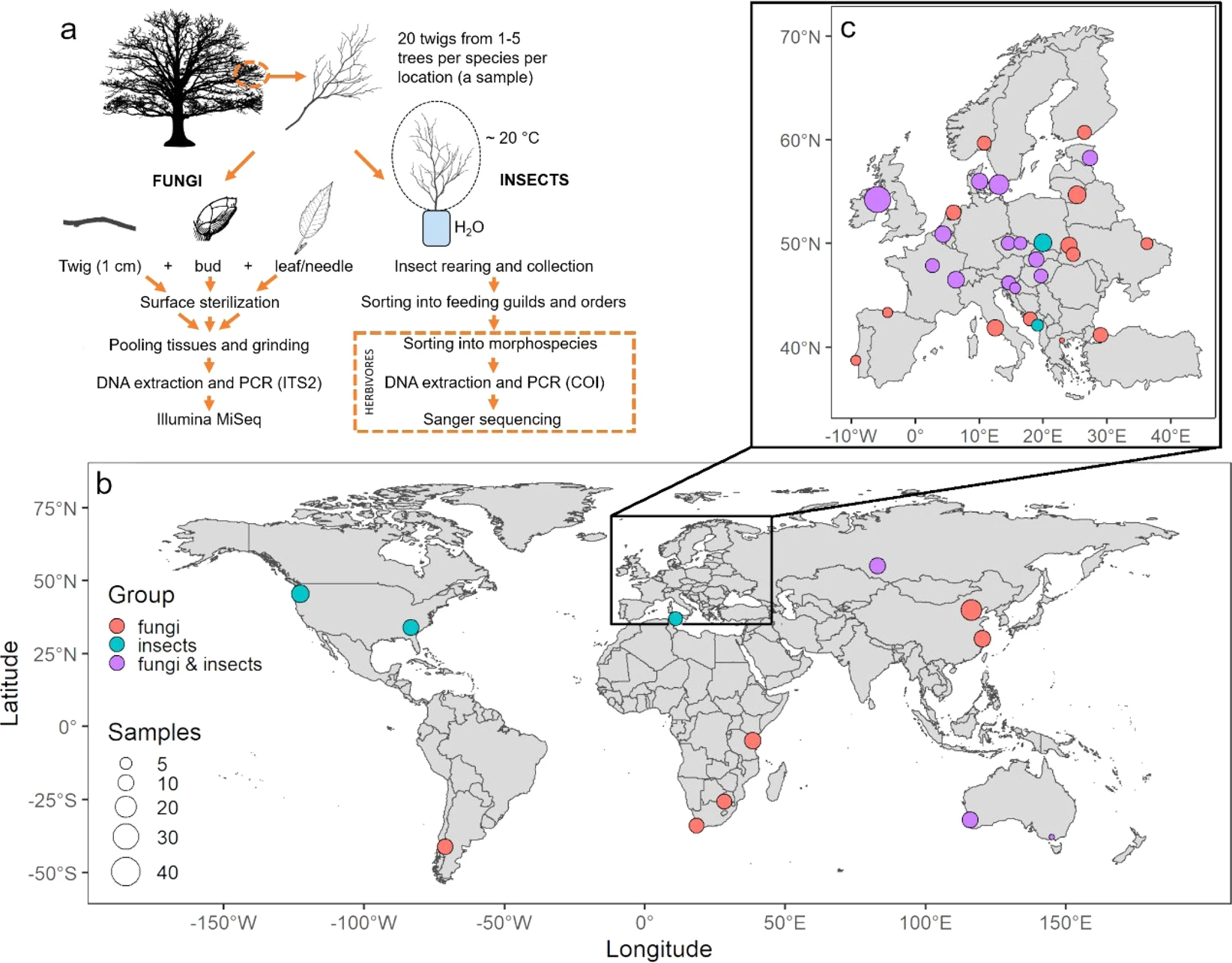 | Franić, Iva; Prospero, Simone; Adamson, Kalev; Allan, Eric; Attorre, Fabio; Auger-Rozenberg, Marie Anne; Augustin, Sylvie; Avtzis, Dimitrios; Baert, Wim; Barta, Marek; Bauters, Kenneth; Bellahirech, Amani; Boroń, Piotr; Bragança, Helena; Brestovanská, Tereza; Brurberg, May Bente; Burgess, Treena; Burokienė, Daiva; Cleary, Michelle; Corley, Juan; Coyle, David R; Csóka, György; Černý, Karel; Davydenko, Kateryna; de Groot, Maarten; Diez, Julio Javier; Lehtijärvi, Tuğba Doğmuş H; Drenkhan, Rein; Edwards, Jacqueline; Elsafy, Mohammed; Eötvös, Csaba Béla; Falko, Roman; Fan, Jianting; Feddern, Nina; Fürjes-Mikó, Ágnes; Gossner, Martin M; Grad, Bartłomiej; Hartmann, Martin; Havrdova, Ludmila; Horáková, Miriam Kádasi; Hrabětová, Markéta; Justesen, Mathias Just; Kacprzyk, Magdalena; Kenis, Marc; Kirichenko, Natalia; Kovač, Marta; Kramarets, Volodymyr; Lacković, Nikola; Lantschner, Maria Victoria; Lazarević, Jelena; Leskiv, Marianna; Li, Hongmei; Madsen, Corrie Lynne; Malumphy, Chris; Matošević, Dinka; Matsiakh, Iryna; May, Tom W; Meffert, Johan; Migliorini, Duccio; Nikolov, Christo; O’Hanlon, Richard; Oskay, Funda; Paap, Trudy; Parpan, Taras; Piškur, Barbara; Ravn, Hans Peter; Richard, John; Ronse, Anne; Roques, Alain; Ruffner, Beat; Sivickis, Karolis; Soliani, Carolina; Talgø, Venche; Tomoshevich, Maria; Uimari, Anne; Ulyshen, Michael; Vettraino, Anna Maria; Villari, Caterina; Wang, Yongjun; Witzell, Johanna; Zlatković, Milica; Eschen, René Worldwide diversity of endophytic fungi and insects associated with dormant tree twigs Journal Article Scientific Data, 9 (62 (2022)), pp. 1-9, 2022, ISSN: 2052-4463. @article{Franić2022, title = {Worldwide diversity of endophytic fungi and insects associated with dormant tree twigs}, author = {Iva Franić and Simone Prospero and Kalev Adamson and Eric Allan and Fabio Attorre and Marie Anne Auger-Rozenberg and Sylvie Augustin and Dimitrios Avtzis and Wim Baert and Marek Barta and Kenneth Bauters and Amani Bellahirech and Piotr Boroń and Helena Bragança and Tereza Brestovanská and May Bente Brurberg and Treena Burgess and Daiva Burokienė and Michelle Cleary and Juan Corley and David R. Coyle and György Csóka and Karel Černý and Kateryna Davydenko and Maarten de Groot and Julio Javier Diez and H. Tuğba Doğmuş Lehtijärvi and Rein Drenkhan and Jacqueline Edwards and Mohammed Elsafy and Csaba Béla Eötvös and Roman Falko and Jianting Fan and Nina Feddern and Ágnes Fürjes-Mikó and Martin M. Gossner and Bartłomiej Grad and Martin Hartmann and Ludmila Havrdova and Miriam Kádasi Horáková and Markéta Hrabětová and Mathias Just Justesen and Magdalena Kacprzyk and Marc Kenis and Natalia Kirichenko and Marta Kovač and Volodymyr Kramarets and Nikola Lacković and Maria Victoria Lantschner and Jelena Lazarević and Marianna Leskiv and Hongmei Li and Corrie Lynne Madsen and Chris Malumphy and Dinka Matošević and Iryna Matsiakh and Tom W. May and Johan Meffert and Duccio Migliorini and Christo Nikolov and Richard O’Hanlon and Funda Oskay and Trudy Paap and Taras Parpan and Barbara Piškur and Hans Peter Ravn and John Richard and Anne Ronse and Alain Roques and Beat Ruffner and Karolis Sivickis and Carolina Soliani and Venche Talgø and Maria Tomoshevich and Anne Uimari and Michael Ulyshen and Anna Maria Vettraino and Caterina Villari and Yongjun Wang and Johanna Witzell and Milica Zlatković and René Eschen}, doi = {10.1038/s41597-022-01162-3}, issn = {2052-4463}, year = {2022}, date = {2022-03-01}, journal = {Scientific Data}, volume = {9}, number = {62 (2022)}, pages = {1-9}, abstract = {International trade in plants and climate change are two of the main factors causing damaging tree pests (i.e. fungi and insects) to spread into new areas. To mitigate these risks, a large-scale assessment of tree-associated fungi and insects is needed. We present records of endophytic fungi and insects in twigs of 17 angiosperm and gymnosperm genera, from 51 locations in 32 countries worldwide. Endophytic fungi were characterized by high-throughput sequencing of 352 samples from 145 tree species in 28 countries. Insects were reared from 227 samples of 109 tree species in 18 countries and sorted into taxonomic orders and feeding guilds. Herbivorous insects were grouped into morphospecies and were identified using molecular and morphological approaches. This dataset reveals the diversity of tree-associated taxa, as it contains 12,721 fungal Amplicon Sequence Variants and 208 herbivorous insect morphospecies, sampled across broad geographic and climatic gradients and for many tree species. This dataset will facilitate applied and fundamental studies on the distribution of fungal endophytes and insects in trees.}, keywords = {}, pubstate = {published}, tppubtype = {article} } International trade in plants and climate change are two of the main factors causing damaging tree pests (i.e. fungi and insects) to spread into new areas. To mitigate these risks, a large-scale assessment of tree-associated fungi and insects is needed. We present records of endophytic fungi and insects in twigs of 17 angiosperm and gymnosperm genera, from 51 locations in 32 countries worldwide. Endophytic fungi were characterized by high-throughput sequencing of 352 samples from 145 tree species in 28 countries. Insects were reared from 227 samples of 109 tree species in 18 countries and sorted into taxonomic orders and feeding guilds. Herbivorous insects were grouped into morphospecies and were identified using molecular and morphological approaches. This dataset reveals the diversity of tree-associated taxa, as it contains 12,721 fungal Amplicon Sequence Variants and 208 herbivorous insect morphospecies, sampled across broad geographic and climatic gradients and for many tree species. This dataset will facilitate applied and fundamental studies on the distribution of fungal endophytes and insects in trees. |
Michalko, Jaroslav; Medo, Juraj; Ferus, Peter; Konôpková, Jana; Košútová, Dominika; Hot’ka, Peter; Barta, Marek Plants, 11 , pp. 417, 2022, ISSN: 2223-7747. @article{Michalko2022, title = {Changes of Endophytic Bacterial Community in Mature Leaves of Prunus laurocerasus L. during the Seasonal Transition from Winter Dormancy to Vegetative Growth}, author = {Jaroslav Michalko and Juraj Medo and Peter Ferus and Jana Konôpková and Dominika Košútová and Peter Hot’ka and Marek Barta}, doi = {10.3390/plants11030417}, issn = {2223-7747}, year = {2022}, date = {2022-02-03}, journal = {Plants}, volume = {11}, pages = {417}, abstract = {Diverse communities of bacterial endophytes inhabit plant tissues, and these bacteria play important roles for plant growth and health. Cherry laurel (Prunus laurocerasus L.) is a broadleaf evergreen shrub that is widely grown in temperate zones for its ornamental and medicinal properties, however virtually nothing is known about its associated bacterial community. In this study, we analysed the matured one-year-old leaves of this plant using Illumina-based 16S rRNA gene metabarcoding to reveal the community structure of endophytic bacteria and understand its shifts during the seasonal transition from winter dormancy to a spring vegetative state. The overall community was composed of four dominant phyla (Proteobacteria, Actinobacteria, Firmicutes, Bacteroidetes). Corynebacterium, Acinetobacter, and Chryseobacterium genera were the most prevalent bacteria, comprising 13.3%, 6.9%, and 6.8% of the amplicon sequence variants (ASVs), respectively. The ASV richness and diversity increased significantly in May as compared to other sampling months (February, March, and April). We observed high variation in the overall community structure of endophytic bacteria among collection dates. The variation was only reflected by a few core community members, suggesting that the changes of the endophytic community during winter/spring seasonal transition are mostly associated with the less abundant community members. We identified biomarker taxa for late winter, mid spring, and late spring collection dates. This study is the first one to report on the diversity and composition of bacterial endophytes in the leaves of cherry laurel and its shifts across the dormancy-to-vegetative seasonal transition.}, keywords = {}, pubstate = {published}, tppubtype = {article} } Diverse communities of bacterial endophytes inhabit plant tissues, and these bacteria play important roles for plant growth and health. Cherry laurel (Prunus laurocerasus L.) is a broadleaf evergreen shrub that is widely grown in temperate zones for its ornamental and medicinal properties, however virtually nothing is known about its associated bacterial community. In this study, we analysed the matured one-year-old leaves of this plant using Illumina-based 16S rRNA gene metabarcoding to reveal the community structure of endophytic bacteria and understand its shifts during the seasonal transition from winter dormancy to a spring vegetative state. The overall community was composed of four dominant phyla (Proteobacteria, Actinobacteria, Firmicutes, Bacteroidetes). Corynebacterium, Acinetobacter, and Chryseobacterium genera were the most prevalent bacteria, comprising 13.3%, 6.9%, and 6.8% of the amplicon sequence variants (ASVs), respectively. The ASV richness and diversity increased significantly in May as compared to other sampling months (February, March, and April). We observed high variation in the overall community structure of endophytic bacteria among collection dates. The variation was only reflected by a few core community members, suggesting that the changes of the endophytic community during winter/spring seasonal transition are mostly associated with the less abundant community members. We identified biomarker taxa for late winter, mid spring, and late spring collection dates. This study is the first one to report on the diversity and composition of bacterial endophytes in the leaves of cherry laurel and its shifts across the dormancy-to-vegetative seasonal transition. | |
2021 |
|
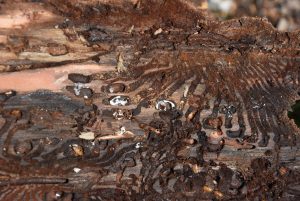 | Hyblerová, Silvia; Medo, Juraj; Barta, Marek Annals of Forest Research, 64 (1), pp. 129-145, 2021, ISSN: 2065-2445. @article{Hyblerová2021, title = {Diversity and prevalence of entomopathogenic fungi (Ascomycota, Hypocreales) in epidemic populations of bark beetles (Coleoptera, Scolytinae) in spruce forests of the Tatra National Park in Slovakia}, author = {Silvia Hyblerová and Juraj Medo and Marek Barta}, url = {http://www.afrjournal.org/index.php/afr/article/view/2152}, doi = {10.15287/afr.2021.2152}, issn = {2065-2445}, year = {2021}, date = {2021-06-29}, journal = {Annals of Forest Research}, volume = {64}, number = {1}, pages = {129-145}, abstract = {Bark beetles are serious forest pests in Slovakia. Their outbreaks may have significant ecological and economic impacts on spruce forests. There is a variety of natural enemies that activate themselves during population outbreaks of insects and entomopathogenic fungi belong to important antagonists with a potential to regulate populations of their hosts. In 2014–2016, species richness and prevalence of entomopathogenic fungi were evaluated during the bark beetle outbreaks in spruce forests affected by windstorms in the Tatra National Park in Slovakia. Three Beauveria species, B. bassiana, B. caledonica and B. pseudobassiana, with Metapochonia bulbillosa were identified from 271 specimens of three bark beetle species, Ips typographus, Ips amitinus and Pityogenes chalcographus. Beauveria bassiana was the dominant pathogen and infected all three bark beetle species. Phylogenetic analysis identified three phylogenetic groups of B. bassiana in the evaluated host populations. M. bulbillosa was reported for the first time from bark beetle hosts and Slovakia. The prevalence of fungal infection in natural populations of I. typographus was low, varied between 0.07 and 0.72%, and have little influence on the bark beetle abundance. }, keywords = {}, pubstate = {published}, tppubtype = {article} } Bark beetles are serious forest pests in Slovakia. Their outbreaks may have significant ecological and economic impacts on spruce forests. There is a variety of natural enemies that activate themselves during population outbreaks of insects and entomopathogenic fungi belong to important antagonists with a potential to regulate populations of their hosts. In 2014–2016, species richness and prevalence of entomopathogenic fungi were evaluated during the bark beetle outbreaks in spruce forests affected by windstorms in the Tatra National Park in Slovakia. Three Beauveria species, B. bassiana, B. caledonica and B. pseudobassiana, with Metapochonia bulbillosa were identified from 271 specimens of three bark beetle species, Ips typographus, Ips amitinus and Pityogenes chalcographus. Beauveria bassiana was the dominant pathogen and infected all three bark beetle species. Phylogenetic analysis identified three phylogenetic groups of B. bassiana in the evaluated host populations. M. bulbillosa was reported for the first time from bark beetle hosts and Slovakia. The prevalence of fungal infection in natural populations of I. typographus was low, varied between 0.07 and 0.72%, and have little influence on the bark beetle abundance. |
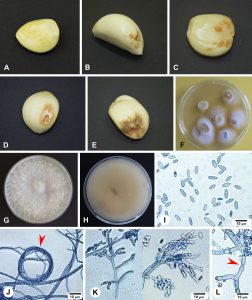 | Horáková, Miriam Kádasi; Tancik, Jan; Barta, Marek Fusarium proliferatum causing dry rot of stored garlic in Slovakia Journal Article Journal of Plant Pathology, 2021, ISSN: 2239-7264. @article{Horáková2021, title = {Fusarium proliferatum causing dry rot of stored garlic in Slovakia}, author = {Miriam Kádasi Horáková and Jan Tancik and Marek Barta}, doi = {10.1007/s42161-021-00883-5}, issn = {2239-7264}, year = {2021}, date = {2021-06-10}, journal = {Journal of Plant Pathology}, abstract = {Symptoms of dry clove rot of Allium sativum produced in Slovakia were noticed during storage in 2019. In 2020, garlic bulbs of eight cultivars were analysed and fungal isolates were obtained. Morphological and molecular identification confirmed the isolation of Fusarium proliferatum from all cultivars. The mean proportion of symptomatic cloves in evaluated samples reached 78.68%, and the mean area of clove surface damaged by the disease ranged from 5.97% to 14.83% 5 weeks after the harvest. The pathogenicity of the selected F. proliferatum isolate was verified by inoculation of garlic cloves in laboratory bioassays. This is the first report of F. proliferatum causing dry rot of garlic bulbs in Slovakia.}, keywords = {}, pubstate = {published}, tppubtype = {article} } Symptoms of dry clove rot of Allium sativum produced in Slovakia were noticed during storage in 2019. In 2020, garlic bulbs of eight cultivars were analysed and fungal isolates were obtained. Morphological and molecular identification confirmed the isolation of Fusarium proliferatum from all cultivars. The mean proportion of symptomatic cloves in evaluated samples reached 78.68%, and the mean area of clove surface damaged by the disease ranged from 5.97% to 14.83% 5 weeks after the harvest. The pathogenicity of the selected F. proliferatum isolate was verified by inoculation of garlic cloves in laboratory bioassays. This is the first report of F. proliferatum causing dry rot of garlic bulbs in Slovakia. |
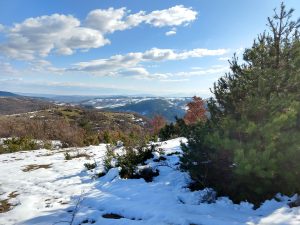 | Takov, Danail; Pilarska, Daniela; Linde, Andreas; Barta, Marek Infectious and parasitic diseases of phytophagous insect pests in the context of extreme environmental conditions Journal Article Central European Forestry Journal, 67 (2), pp. 72-84, 2021, ISSN: 2454-0358. @article{Takov2021, title = {Infectious and parasitic diseases of phytophagous insect pests in the context of extreme environmental conditions}, author = {Danail Takov and Daniela Pilarska and Andreas Linde and Marek Barta}, url = {https://web.nlcsk.org/wp-content/uploads/2021/04/Takov.pdf}, doi = {10.2478/forj-2020-0018}, issn = {2454-0358}, year = {2021}, date = {2021-04-01}, journal = {Central European Forestry Journal}, volume = {67}, number = {2}, pages = {72-84}, abstract = {The density of phytophagous insect pest populations is related (directly and indirectly) to several groups of factors that can be broadly divided into: abiotic, biotic and anthropogenic. Each extreme in the abiotic environment at a macro-level leads to a series of consecutive extremes in the biotic environment, which eventually results in micro-level responses in the individual organisms. The manifestation of factors acts in aggregate or in a sequence, creating a chain of processes around us. Insects very efficiently use the abundance of nutritional resources, resulting in a tremendous increase in their population density, and triggering control mechanisms through the emergence of parasitic and pathogenic infections (viruses, bacteria, fungi, microsporidia, protozoa and nematodes). The development of entomopathogenic infections in host populations is directly dependent on the characteristics of both the antagonist and the insect. It is associated with the lifestyle and life cycle of the insect, with features encoded in the mechanism of pathogen action, and limited by the pathogen’s virulence and pathogenicity.}, keywords = {}, pubstate = {published}, tppubtype = {article} } The density of phytophagous insect pest populations is related (directly and indirectly) to several groups of factors that can be broadly divided into: abiotic, biotic and anthropogenic. Each extreme in the abiotic environment at a macro-level leads to a series of consecutive extremes in the biotic environment, which eventually results in micro-level responses in the individual organisms. The manifestation of factors acts in aggregate or in a sequence, creating a chain of processes around us. Insects very efficiently use the abundance of nutritional resources, resulting in a tremendous increase in their population density, and triggering control mechanisms through the emergence of parasitic and pathogenic infections (viruses, bacteria, fungi, microsporidia, protozoa and nematodes). The development of entomopathogenic infections in host populations is directly dependent on the characteristics of both the antagonist and the insect. It is associated with the lifestyle and life cycle of the insect, with features encoded in the mechanism of pathogen action, and limited by the pathogen’s virulence and pathogenicity. |
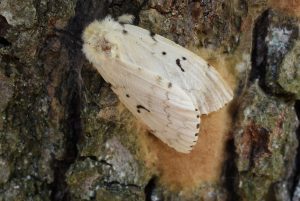 | Zúbrik, Milan; Kunca, Andrej; Kulfan, Ján; Rell, Slavomír; Nikolov, Christo; Galko, Juraj; Vakula, Jozef; Gubka, Andrej; Leontovyč, Roman; Konôpka, Bohdan; Lalík, Michal; Longauerová, Valéria; Sitková, Zuzana; Liška, Jan; Zach, Peter; Barta, Marek; Holuša, Jaroslav Occurrence of gypsy moth (Lymantria dispar L.) in the Slovak Republic and its outbreaks during 1945–2020 Journal Article Central European Forestry Journal, 67 (2), pp. 55-71, 2021, ISSN: 2454-0358. @article{Zúbrik2021, title = {Occurrence of gypsy moth (Lymantria dispar L.) in the Slovak Republic and its outbreaks during 1945–2020}, author = {Milan Zúbrik and Andrej Kunca and Ján Kulfan and Slavomír Rell and Christo Nikolov and Juraj Galko and Jozef Vakula and Andrej Gubka and Roman Leontovyč and Bohdan Konôpka and Michal Lalík and Valéria Longauerová and Zuzana Sitková and Jan Liška and Peter Zach and Marek Barta and Jaroslav Holuša}, url = {https://web.nlcsk.org/wp-content/uploads/2021/04/Zubrik_etal.pdf}, doi = {10.2478/forj-2021-0007}, issn = {2454-0358}, year = {2021}, date = {2021-04-01}, journal = {Central European Forestry Journal}, volume = {67}, number = {2}, pages = {55-71}, abstract = {The gypsy moth is one of the most serious pests in forests and fruit tree plantations over prevailing parts of the Northern Hemisphere. This work is based on a literature review, and presents history of gypsy moth Lymantria dispar L., observed in Slovak forests within the period 1945–2020. The life cycle, hosts, natural enemies, population dynamics of pests, impact of outbreaks on forests and different management methods used in the past are discussed. Since 1945, there were nine gypsy moth outbreaks in Slovakia. Between 1945 and 2020, a total of 155,034 ha of deciduous forests were touched with varying intensity, representing an average annual damage of 2,040 ha. The strongest outbreak culminated in 2004. Totally 51,479 ha were attacked in the period of 2000–2008. We have found outbreak periods that repeat with frequency of 7.8 ±2.2 years and the average outbreak phase lasts 3.1 ±1.1 years. The period between two subsequent outbreaks seems to be more or less constant and duration of the outbreak phase seems to be gradually shortened during the study period. Several factors influencing the gypsy moth population dynamics in Slovakia are discussed. The role of biological control by using entomopathogenic fungus Entomophaga maimaiga is described.}, keywords = {}, pubstate = {published}, tppubtype = {article} } The gypsy moth is one of the most serious pests in forests and fruit tree plantations over prevailing parts of the Northern Hemisphere. This work is based on a literature review, and presents history of gypsy moth Lymantria dispar L., observed in Slovak forests within the period 1945–2020. The life cycle, hosts, natural enemies, population dynamics of pests, impact of outbreaks on forests and different management methods used in the past are discussed. Since 1945, there were nine gypsy moth outbreaks in Slovakia. Between 1945 and 2020, a total of 155,034 ha of deciduous forests were touched with varying intensity, representing an average annual damage of 2,040 ha. The strongest outbreak culminated in 2004. Totally 51,479 ha were attacked in the period of 2000–2008. We have found outbreak periods that repeat with frequency of 7.8 ±2.2 years and the average outbreak phase lasts 3.1 ±1.1 years. The period between two subsequent outbreaks seems to be more or less constant and duration of the outbreak phase seems to be gradually shortened during the study period. Several factors influencing the gypsy moth population dynamics in Slovakia are discussed. The role of biological control by using entomopathogenic fungus Entomophaga maimaiga is described. |
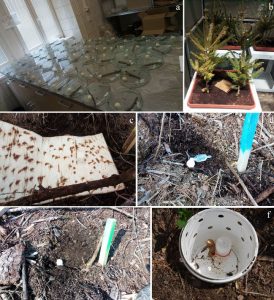 | Lalík, Michal; Galko, Juraj; Nikolov, Christo; Rell, Slavomír; Kunca, Andrej; Zúbrik, Milan; Hyblerová, Silvia; Barta, Marek; Holuša, Jaroslav Potential of Beauveria bassiana application via a carrier to control the large pine weevil Journal Article Crop Protection, 143 , pp. 105563, 2021, ISSN: 0261-2194. @article{Lalík2021, title = {Potential of Beauveria bassiana application via a carrier to control the large pine weevil}, author = {Michal Lalík and Juraj Galko and Christo Nikolov and Slavomír Rell and Andrej Kunca and Milan Zúbrik and Silvia Hyblerová and Marek Barta and Jaroslav Holuša}, doi = {https://doi.org/10.1016/j.cropro.2021.105563}, issn = {0261-2194}, year = {2021}, date = {2021-03-02}, journal = {Crop Protection}, volume = {143}, pages = {105563}, abstract = {The large pine weevil (Hylobius abietis) is an important pest of freshly planted coniferous trees. Feeding damage to conifer seedlings can be prevented by protecting the seedlings (mechanically or chemically), or by reducing H. abietis abundance. The entomopathogenic fungus Beauveria bassiana has promise for H. abietis control. To test the effects of the B. bassiana-colonized carriers (25 mm in diameter and colonized by strain AMEP20) on H. abietis adults that move into forest clearances, we performed several experiments. These included an experiment in Petri dishes under laboratory conditions, an experiment in cages with Norway spruce seedlings under semi-natural conditions, and a field experiment. Infection by B. bassiana and mortality of H. abietis was confirmed in all three experiments. The total mortality rate in all Petri dishes with B. bassiana carriers after 14 days was 74% (80% with fresh carriers; 68% with carriers that had been treated with UV light; 82% for carriers that had been frozen; 45% for adults that were exposed to carriers for only 24 h; and 95% for carriers that had been stored at 4 °C for 2 months). The mortality of H. abietis adults was affected by the absence/presence of carriers in the cages with spruce plants. The number of dead adults after 4 weeks of treatment in forest clearing were higher in plots with carriers than in the control plot. Mortality was highest for adults trapped in the plot with carriers on trap barks (58%), followed by the plot with carriers and an attractant (48%), and followed by the plots with carriers without an attractant (35%). The results suggest that carriers colonized by the entomopathogenic fungus B. bassiana could be suitable for reducing H. abietis abundance in forests. The results indicated that H. abietis adults may be infected by B. bassiana after only a short exposure to carriers. The B. bassiana-colonized carrier is ready-to-use, i.e., it could be immediately produced and applied.}, keywords = {}, pubstate = {published}, tppubtype = {article} } The large pine weevil (Hylobius abietis) is an important pest of freshly planted coniferous trees. Feeding damage to conifer seedlings can be prevented by protecting the seedlings (mechanically or chemically), or by reducing H. abietis abundance. The entomopathogenic fungus Beauveria bassiana has promise for H. abietis control. To test the effects of the B. bassiana-colonized carriers (25 mm in diameter and colonized by strain AMEP20) on H. abietis adults that move into forest clearances, we performed several experiments. These included an experiment in Petri dishes under laboratory conditions, an experiment in cages with Norway spruce seedlings under semi-natural conditions, and a field experiment. Infection by B. bassiana and mortality of H. abietis was confirmed in all three experiments. The total mortality rate in all Petri dishes with B. bassiana carriers after 14 days was 74% (80% with fresh carriers; 68% with carriers that had been treated with UV light; 82% for carriers that had been frozen; 45% for adults that were exposed to carriers for only 24 h; and 95% for carriers that had been stored at 4 °C for 2 months). The mortality of H. abietis adults was affected by the absence/presence of carriers in the cages with spruce plants. The number of dead adults after 4 weeks of treatment in forest clearing were higher in plots with carriers than in the control plot. Mortality was highest for adults trapped in the plot with carriers on trap barks (58%), followed by the plot with carriers and an attractant (48%), and followed by the plots with carriers without an attractant (35%). The results suggest that carriers colonized by the entomopathogenic fungus B. bassiana could be suitable for reducing H. abietis abundance in forests. The results indicated that H. abietis adults may be infected by B. bassiana after only a short exposure to carriers. The B. bassiana-colonized carrier is ready-to-use, i.e., it could be immediately produced and applied. |
2020 |
|
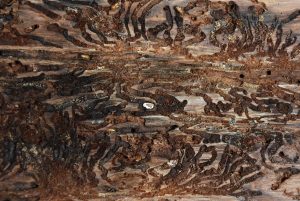 | Barta, Marek; Takov, Danail; Pilarska, Daniela; Doychev, Danail; Horáková, Miriam Kádasi Journal of Forest Science, 66 (10), pp. 420-435, 2020, ISSN: 1212-4834. @article{Barta2020b, title = {Entomopathogenic fungi of the genus Beauveria and their pathogenicity to Ips typographus (Coleoptera: Curculionidae) in the Vitosha National Park, Bulgaria}, author = {Marek Barta and Danail Takov and Daniela Pilarska and Danail Doychev and Miriam Kádasi Horáková}, url = {https://www.agriculturejournals.cz/web/jfs.htm?type=article&id=123_2020-JFS}, doi = {10.17221/123/2020-JFS}, issn = {1212-4834}, year = {2020}, date = {2020-10-01}, journal = {Journal of Forest Science}, volume = {66}, number = {10}, pages = {420-435}, abstract = {Ips typographus is a serious pest for forestry in Eurasia. Effective control is difficult due to its cryptic habits and insect pathogenic microorganisms, including entomopathogenic fungi that are believed to be a promising alternative to the traditional control measures of this pest. In 2018, diversity of entomopathogenic fungi of the genus Beauveria was studied in populations of I. typographus in the Vitosha National Park, Bulgaria. Two species, B. bassiana and B. caledonica, were identified and 33 in vitro strains were obtained. Phylogenetic positions of the strains were evaluated according to phylogenetic inferences based on ITS and TEF-1α. Pathogenicity of the strains against bark beetles was tested in laboratory. All strains were pathogenic, although there was some variability in the efficacy of B. bassiana strains. Virulence of the five most pathogenic strains (four B. bassiana strains and one B. caledonica strain) was compared with the commercial mycoinsecticide Boverol® and highly-virulent B. bassiana strain ARSEF 12957 isolated from I. typographus in Slovakia. The strain from Boverol® was least virulent and the Slovak strain ARSEF 12957 was more efficient than the Bulgarian strains, but the difference was not significant. The laboratory experiments suggest that the Bulgarian strains have a potential for the control of bark beetle adults.}, keywords = {}, pubstate = {published}, tppubtype = {article} } Ips typographus is a serious pest for forestry in Eurasia. Effective control is difficult due to its cryptic habits and insect pathogenic microorganisms, including entomopathogenic fungi that are believed to be a promising alternative to the traditional control measures of this pest. In 2018, diversity of entomopathogenic fungi of the genus Beauveria was studied in populations of I. typographus in the Vitosha National Park, Bulgaria. Two species, B. bassiana and B. caledonica, were identified and 33 in vitro strains were obtained. Phylogenetic positions of the strains were evaluated according to phylogenetic inferences based on ITS and TEF-1α. Pathogenicity of the strains against bark beetles was tested in laboratory. All strains were pathogenic, although there was some variability in the efficacy of B. bassiana strains. Virulence of the five most pathogenic strains (four B. bassiana strains and one B. caledonica strain) was compared with the commercial mycoinsecticide Boverol® and highly-virulent B. bassiana strain ARSEF 12957 isolated from I. typographus in Slovakia. The strain from Boverol® was least virulent and the Slovak strain ARSEF 12957 was more efficient than the Bulgarian strains, but the difference was not significant. The laboratory experiments suggest that the Bulgarian strains have a potential for the control of bark beetle adults. |
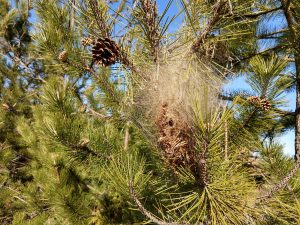 | Barta, Marek; Horáková, Miriam Kádasi; Georgieva, Margarita; Mirchev, Plamen; Zaemdzhikova, Gergana; Pilarska, Daniela; Takov, Danail; Todorov, Milcho; Hubenov, Zdravko; Pilarski, Plamen; Georgiev, Georgi Acta Zoologica Bulgarica, Supplementum 15 , pp. 89-96, 2020, ISSN: 0324-0770. @article{Barta2020, title = {Entomopathogenic Fungi (Ascomycota: Hypocreales) as Natural Antagonists of the Pine Processionary Moth Thaumetopoea pityocampa (Denis & Schiffermüller, 1775) (Lepidoptera: Notodontidae) in Bulgaria}, author = {Marek Barta and Miriam Kádasi Horáková and Margarita Georgieva and Plamen Mirchev and Gergana Zaemdzhikova and Daniela Pilarska and Danail Takov and Milcho Todorov and Zdravko Hubenov and Plamen Pilarski and Georgi Georgiev}, url = {http://www.acta-zoologica-bulgarica.eu/Suppl_15_19.pdf}, issn = {0324-0770}, year = {2020}, date = {2020-08-01}, journal = {Acta Zoologica Bulgarica}, volume = {Supplementum 15}, pages = {89-96}, abstract = {Thaumetopoea pityocampa, a moth naturally distributed in pine ecosystems of Mediterranean region, is considered the most dangerous defoliator in Bulgarian pine forests. Caterpillars of this species also represent a health hazard because their hairs, which contain an urticating protein – thaumetopoein, are responsible for painful skin irritations, rashes and allergic reactions in some people. Therefore, T. pityocampa is not only a serious forest pest, but also a public health problem. Populations of the moth are regulated by a complex of natural enemies. There is only limited information about a parasitic activity of entomopathogenic fungi. These fungi are natural antagonists of insects helping to control of host population and prevention of outbreaks formation. A goal of the present study was to identify species of entomopathogenic fungi in natural populations of T. pityocampa in Bulgaria. During the study, 908 larvae and pupae were collected from two sites (Fotinovo and Kandilka villages) in the south-eastern Rhodopes. In laboratory conditions, 147 larvae or pupae showing characteristic symptoms of mycoses were observed and on 27 of them in vitro isolates were obtained. The cultures were microscopically identified and subsequently analysed by a sequencing study of the internal transcribed region of rDNA and a partial sequence of TEF1-α gene. Altogether, two Beauveria species (B. pseudobassiana – 7 isolates and B. varroae – 6 isolates) and Purpureocillium lilacinum (14 isolates) were identified. The three entomopathogens are reported from T. pityocampa for the first time.}, keywords = {}, pubstate = {published}, tppubtype = {article} } Thaumetopoea pityocampa, a moth naturally distributed in pine ecosystems of Mediterranean region, is considered the most dangerous defoliator in Bulgarian pine forests. Caterpillars of this species also represent a health hazard because their hairs, which contain an urticating protein – thaumetopoein, are responsible for painful skin irritations, rashes and allergic reactions in some people. Therefore, T. pityocampa is not only a serious forest pest, but also a public health problem. Populations of the moth are regulated by a complex of natural enemies. There is only limited information about a parasitic activity of entomopathogenic fungi. These fungi are natural antagonists of insects helping to control of host population and prevention of outbreaks formation. A goal of the present study was to identify species of entomopathogenic fungi in natural populations of T. pityocampa in Bulgaria. During the study, 908 larvae and pupae were collected from two sites (Fotinovo and Kandilka villages) in the south-eastern Rhodopes. In laboratory conditions, 147 larvae or pupae showing characteristic symptoms of mycoses were observed and on 27 of them in vitro isolates were obtained. The cultures were microscopically identified and subsequently analysed by a sequencing study of the internal transcribed region of rDNA and a partial sequence of TEF1-α gene. Altogether, two Beauveria species (B. pseudobassiana – 7 isolates and B. varroae – 6 isolates) and Purpureocillium lilacinum (14 isolates) were identified. The three entomopathogens are reported from T. pityocampa for the first time. |
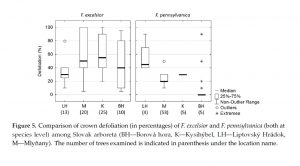 | Pastirčáková, K; Adamčíková, K; Barta, M; Pažitný, J; Hoťka, P; Sarvašová, I; Kádasi-Horáková, M Host range of Hymenoscyphus fraxineus in Slovak arboreta Journal Article Forests, 11 (5), pp. 1-18, Article Number: 596, 2020, ISSN: 1999-4907. @article{Pastirčáková25.0, title = {Host range of \textit{Hymenoscyphus fraxineus} in Slovak arboreta}, author = {K. Pastirčáková and K. Adamčíková and M. Barta and J. Pažitný and P. Hoťka and I. Sarvašová and M. Kádasi-Horáková}, doi = {10.3390/f11050596}, issn = {1999-4907}, year = {2020}, date = {2020-05-25}, journal = {Forests}, volume = {11}, number = {5}, pages = {1-18, Article Number: 596}, abstract = {The health of 34 different Fraxinus taxa in association with the pathogenic fungus Hymenoscyphus fraxineus was assessed in four Slovak arboreta. Averaged across all arboreta, nearly one-quarter (24.9%) of all evaluated trees showed ash dieback symptoms. The damage was most serious on the common ash F. excelsior, a native species. The percentage of dead trees did not exceed 2% for all evaluated trees. Generally, ash trees of all ages were affected, though the intensity of the damage varied among the sites. The identity of H. fraxineus was confirmed by conventional PCR targeting the internal transcribed spacer (ITS) sequences of the nuclear ribosomal DNA, as well as the 18S gene/ITS-2 region of the rDNA operon. In Slovakia, the pathogen has expanded its host range from native species not only to their ornamental cultivars, but also to introduced North American (F. cinerea, F. latifolia, F. pennsylvanica, F. quadrangulata) and Asian (F. bungeana, F. chinensis ssp. rhynchophylla, F. mandshurica) ash species. H. fraxineus was also observed on the previous year’s leaf petioles of the native European species F. ornus, considered a weakly susceptible host. In Slovak arboreta, H. fraxineus was found on 23 Fraxinus taxa; 21 of them represent first records for the country. F. bungeana is recorded as a new host species of H. fraxineus.}, keywords = {}, pubstate = {published}, tppubtype = {article} } The health of 34 different Fraxinus taxa in association with the pathogenic fungus Hymenoscyphus fraxineus was assessed in four Slovak arboreta. Averaged across all arboreta, nearly one-quarter (24.9%) of all evaluated trees showed ash dieback symptoms. The damage was most serious on the common ash F. excelsior, a native species. The percentage of dead trees did not exceed 2% for all evaluated trees. Generally, ash trees of all ages were affected, though the intensity of the damage varied among the sites. The identity of H. fraxineus was confirmed by conventional PCR targeting the internal transcribed spacer (ITS) sequences of the nuclear ribosomal DNA, as well as the 18S gene/ITS-2 region of the rDNA operon. In Slovakia, the pathogen has expanded its host range from native species not only to their ornamental cultivars, but also to introduced North American (F. cinerea, F. latifolia, F. pennsylvanica, F. quadrangulata) and Asian (F. bungeana, F. chinensis ssp. rhynchophylla, F. mandshurica) ash species. H. fraxineus was also observed on the previous year’s leaf petioles of the native European species F. ornus, considered a weakly susceptible host. In Slovak arboreta, H. fraxineus was found on 23 Fraxinus taxa; 21 of them represent first records for the country. F. bungeana is recorded as a new host species of H. fraxineus. |
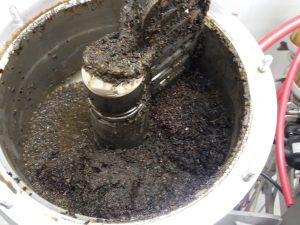 | Rusín, Jiří; Mudrončeková, Silvia; Barta, Marek; Chamrádová, Kateřina Spruce bark beetles as a biological waste that can be processed in a biogas plant Journal Article Turkish Journal of Agriculture and Forestry, 44 (2), pp. 169-179, 2020, ISSN: 1300-011X. @article{Rusín2020, title = {Spruce bark beetles as a biological waste that can be processed in a biogas plant}, author = {Jiří Rusín and Silvia Mudrončeková and Marek Barta and Kateřina Chamrádová}, url = {https://journals.tubitak.gov.tr/agriculture/abstract.htm?id=26786}, doi = {10.3906/tar-1902-13}, issn = {1300-011X}, year = {2020}, date = {2020-04-01}, journal = {Turkish Journal of Agriculture and Forestry}, volume = {44}, number = {2}, pages = {169-179}, abstract = {Biogas plays an important role in reducing the amount of biowaste that is converted to methane which is usable by multiple pathways in the energy sector. Bark beetles are among the most important pests of spruce forests in Europe. Principal measures of managing bark beetle populations include trapping them with pheromone traps. Biomass of bark beetles collected by the traps constitutes a waste of forest resources that could potentially be processed in biogas plants. The aim of this study was to provide information about the trapping of bark beetles by pheromone traps in Tatra National Park during 2005–2018 and to verify the energy potential of a combination of liquid digestate and bark beetle biomass collected by pheromone traps. The bark beetle biomass is a seasonal small volume nitrogen-rich material which could be processed at agricultural biogas plants. The biochemical methane potential batch test performed at 40 °C showed a high degree of digestion of milled beetles within 40 days, with a methane production of 0.242 Nm3 per kilogram of total solids (TS). The single-stage low-solids mesophilic fed-batch anaerobic digestion of untreated beetles was carried out in a lab-scale rotary drum reactor. Within 52 days, the average organic loading rate was 1.019 kg VS m–3 day–1, where VS stands for volatile solids. The specific biogas and methane production reached 0.218 Nm3 kg–1 TS and 0.140 Nm3 kg–1 TS, respectively. The cuticles of the beetle bodies were not obviously disturbed by the fermentation process. The digestate was quite rich in nitrogen, but the other element contents did not differ too much from fertilizer made from manure or phytomass.}, keywords = {}, pubstate = {published}, tppubtype = {article} } Biogas plays an important role in reducing the amount of biowaste that is converted to methane which is usable by multiple pathways in the energy sector. Bark beetles are among the most important pests of spruce forests in Europe. Principal measures of managing bark beetle populations include trapping them with pheromone traps. Biomass of bark beetles collected by the traps constitutes a waste of forest resources that could potentially be processed in biogas plants. The aim of this study was to provide information about the trapping of bark beetles by pheromone traps in Tatra National Park during 2005–2018 and to verify the energy potential of a combination of liquid digestate and bark beetle biomass collected by pheromone traps. The bark beetle biomass is a seasonal small volume nitrogen-rich material which could be processed at agricultural biogas plants. The biochemical methane potential batch test performed at 40 °C showed a high degree of digestion of milled beetles within 40 days, with a methane production of 0.242 Nm3 per kilogram of total solids (TS). The single-stage low-solids mesophilic fed-batch anaerobic digestion of untreated beetles was carried out in a lab-scale rotary drum reactor. Within 52 days, the average organic loading rate was 1.019 kg VS m–3 day–1, where VS stands for volatile solids. The specific biogas and methane production reached 0.218 Nm3 kg–1 TS and 0.140 Nm3 kg–1 TS, respectively. The cuticles of the beetle bodies were not obviously disturbed by the fermentation process. The digestate was quite rich in nitrogen, but the other element contents did not differ too much from fertilizer made from manure or phytomass. |
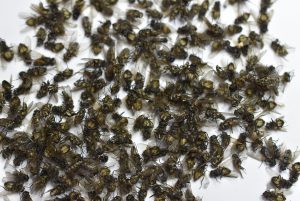 | Semelbauer, Marek; Oboňa, Jozef; Barta, Marek; Mangová, Barbara; Kozánek, Milan Spatial distribution and seasonal dynamics of non-biting moth flies (Diptera, Psychodidae) in confound conditions of a stable Journal Article Polish Journal of Entomology, 89 (4), pp. 190-199, 2020, ISSN: 0032-3780. @article{Semelbauer2020, title = {Spatial distribution and seasonal dynamics of non-biting moth flies (Diptera, Psychodidae) in confound conditions of a stable}, author = {Marek Semelbauer and Jozef Oboňa and Marek Barta and Barbara Mangová and Milan Kozánek}, issn = {0032-3780}, year = {2020}, date = {2020-01-01}, journal = {Polish Journal of Entomology}, volume = {89}, number = {4}, pages = {190-199}, abstract = {Many small Diptera adopted at some level endophilic life style, including man-made buildings. Stables create a specific type of microhabitat, which provides shady and relatively humid conditions in combination with excess of organic matter. Unlike the parasites (mosquitos, biting midges, etc.), the commensal fauna of stables is poorly studied. Moth flies (Psychodidae) were collected in cow stable located in Šenkvice, SW Slovakia. Special traps (derived from Malaise traps) were installed along the stable internal wall and in three different heights. In total, we recorded 6325 moth flies belonging to 8 species. The flight period lasted from spring to autumn. Seasonal dynamics was strongly influenced by rainfall and mean week temperature, e.g. high temperature in midsummer caused drop in moth flies captures. The moth flies clearly preferred the ground and moderately preferred the interior of stable.}, keywords = {}, pubstate = {published}, tppubtype = {article} } Many small Diptera adopted at some level endophilic life style, including man-made buildings. Stables create a specific type of microhabitat, which provides shady and relatively humid conditions in combination with excess of organic matter. Unlike the parasites (mosquitos, biting midges, etc.), the commensal fauna of stables is poorly studied. Moth flies (Psychodidae) were collected in cow stable located in Šenkvice, SW Slovakia. Special traps (derived from Malaise traps) were installed along the stable internal wall and in three different heights. In total, we recorded 6325 moth flies belonging to 8 species. The flight period lasted from spring to autumn. Seasonal dynamics was strongly influenced by rainfall and mean week temperature, e.g. high temperature in midsummer caused drop in moth flies captures. The moth flies clearly preferred the ground and moderately preferred the interior of stable. |
2019 |
|
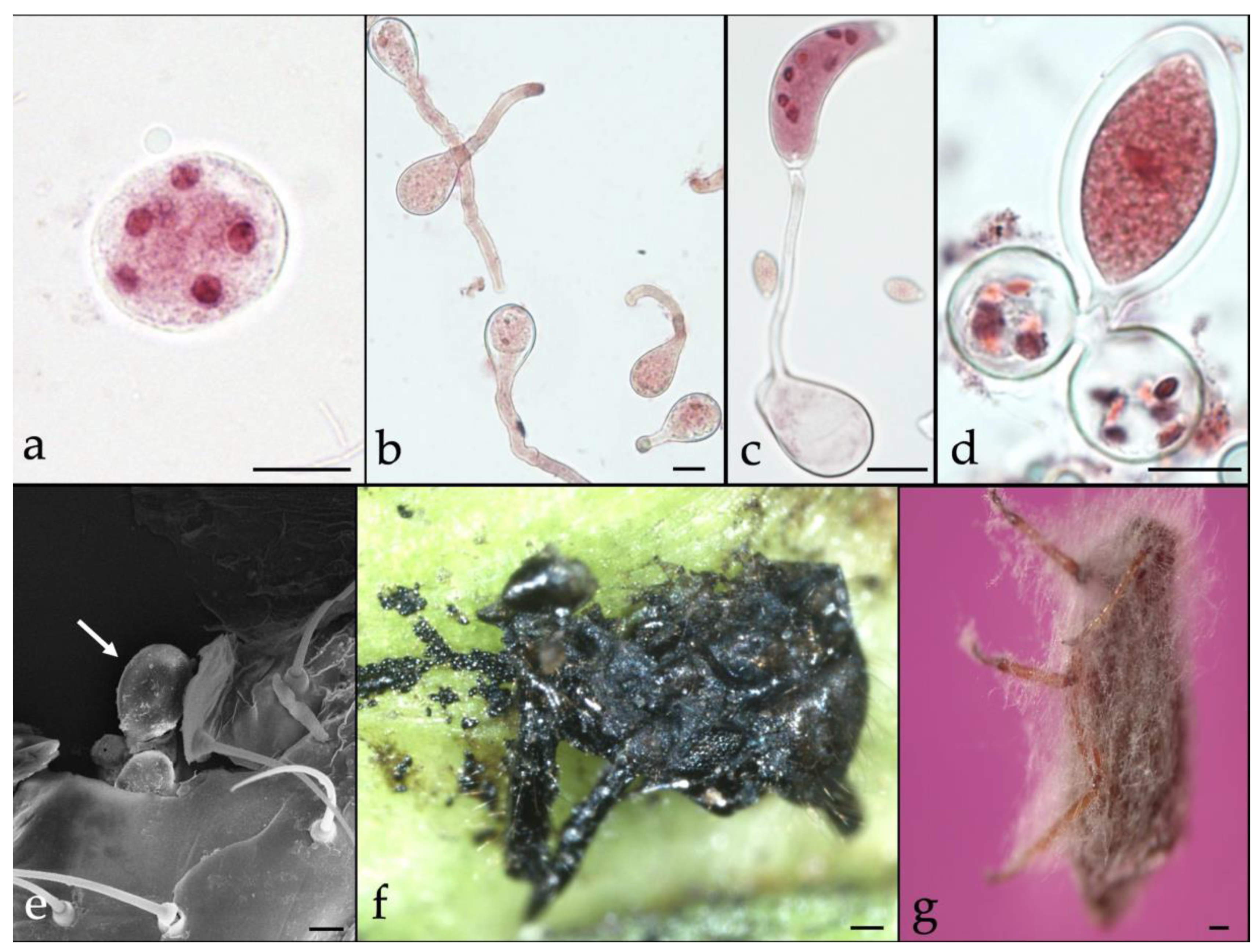 | Dara, Surendra K; Montalva, Cristian; Barta, Marek Microbial Control of Invasive Forest Pests with Entomopathogenic Fungi: A Review of the Current Situation Journal Article Insects, 10 (10), 2019, ISSN: 2075-4450. @article{Dara2019, title = {Microbial Control of Invasive Forest Pests with Entomopathogenic Fungi: A Review of the Current Situation}, author = {Surendra K. Dara and Cristian Montalva and Marek Barta}, doi = {10.3390/insects10100341}, issn = {2075-4450}, year = {2019}, date = {2019-10-12}, journal = {Insects}, volume = {10}, number = {10}, abstract = {The health of the forestlands of the world is impacted by a number of insect pests and some of them cause significant damage with serious economic and environmental implications. Whether it is damage of the North American cypress aphid in South America and Africa, or the destruction of maple trees in North America by the Asian long horned beetle, invasive forest pests are a major problem in many parts of the world. Several studies explored microbial control opportunities of invasive forest pests with entomopathogenic bacteria, fungi, and viruses, and some are successfully utilized as a part of integrated forest pest management programs around the world. This manuscript discusses some invasive pests and the status of their microbial control around the world with entomopathogenic fungi. }, keywords = {}, pubstate = {published}, tppubtype = {article} } The health of the forestlands of the world is impacted by a number of insect pests and some of them cause significant damage with serious economic and environmental implications. Whether it is damage of the North American cypress aphid in South America and Africa, or the destruction of maple trees in North America by the Asian long horned beetle, invasive forest pests are a major problem in many parts of the world. Several studies explored microbial control opportunities of invasive forest pests with entomopathogenic bacteria, fungi, and viruses, and some are successfully utilized as a part of integrated forest pest management programs around the world. This manuscript discusses some invasive pests and the status of their microbial control around the world with entomopathogenic fungi. |
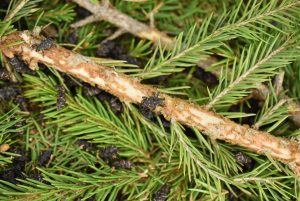 | Barta, Marek; Lalík, Michal; Rell, Slavomír; Kunca, Andrej; Horáková, Miriam Kádasi; Mudrončeková, Silvia; Galko, Juraj Forests, 10 (634), pp. 1-18, 2019, ISSN: 1999-4907. @article{Barta2019, title = {Hypocrealean fungi associated with Hylobius abietis in Slovakia, their virulence against weevil adults and effect on feeding damage in laboratory}, author = {Marek Barta and Michal Lalík and Slavomír Rell and Andrej Kunca and Miriam Kádasi Horáková and Silvia Mudrončeková and Juraj Galko}, doi = {10.3390/f10080634}, issn = {1999-4907}, year = {2019}, date = {2019-07-29}, journal = {Forests}, volume = {10}, number = {634}, pages = {1-18}, abstract = {In temperate regions of Europe, the large pine weevil, Hylobius abietis, is a major pest of coniferous forests mostly at sites where clear-felling is followed by planting of saplings. Control measures against this pest are based on silvicultural techniques, an application of physical barriers on stems of saplings and insecticide treatments. To avoid the use of insecticides, alternative measures such as biological control have been investigated. The goal of the present study was to obtain local strains of entomopathogenic fungi (Ascomycota, Hypocreales) from natural populations of H. abietis, and to investigate their efficacy against the weevil. A survey on entomopathogenic fungi was undertaken at clear-felled areas of spruce forests in northern Slovakia. Two Beauveria species, B. bassiana and B. pseudobassiana, were identified, and 22 in vitro strains were obtained. Mean prevalence of infected adults was low (2.10%) and the mycosis was mostly recorded during May and June. Virulence of Beauveria strains against the weevil was tested in laboratory. B. bassiana strain AMEP20 was significantly most virulent (LC50 of 0.65 x 108 conidia/ml). Treatment with conidia of AMEP20 strain affected feeding damage by the weevil on bark of Scots pine twigs. Daily bark consumption by B. bassiana-treated weevils was lower than by untreated individuals and decreased with increasing conidia concentration used for the treatment. In the outdoor experiment, AMEP20 strain killed weevils that fed on spruce saplings treated with conidia suspensions. Mortality due to mycosis on weevils exposed to the conidia-treated saplings reached 30.0%–76.5% and 55.0%–88.2% after 32 and 46 days, respectively.}, keywords = {}, pubstate = {published}, tppubtype = {article} } In temperate regions of Europe, the large pine weevil, Hylobius abietis, is a major pest of coniferous forests mostly at sites where clear-felling is followed by planting of saplings. Control measures against this pest are based on silvicultural techniques, an application of physical barriers on stems of saplings and insecticide treatments. To avoid the use of insecticides, alternative measures such as biological control have been investigated. The goal of the present study was to obtain local strains of entomopathogenic fungi (Ascomycota, Hypocreales) from natural populations of H. abietis, and to investigate their efficacy against the weevil. A survey on entomopathogenic fungi was undertaken at clear-felled areas of spruce forests in northern Slovakia. Two Beauveria species, B. bassiana and B. pseudobassiana, were identified, and 22 in vitro strains were obtained. Mean prevalence of infected adults was low (2.10%) and the mycosis was mostly recorded during May and June. Virulence of Beauveria strains against the weevil was tested in laboratory. B. bassiana strain AMEP20 was significantly most virulent (LC50 of 0.65 x 108 conidia/ml). Treatment with conidia of AMEP20 strain affected feeding damage by the weevil on bark of Scots pine twigs. Daily bark consumption by B. bassiana-treated weevils was lower than by untreated individuals and decreased with increasing conidia concentration used for the treatment. In the outdoor experiment, AMEP20 strain killed weevils that fed on spruce saplings treated with conidia suspensions. Mortality due to mycosis on weevils exposed to the conidia-treated saplings reached 30.0%–76.5% and 55.0%–88.2% after 32 and 46 days, respectively. |
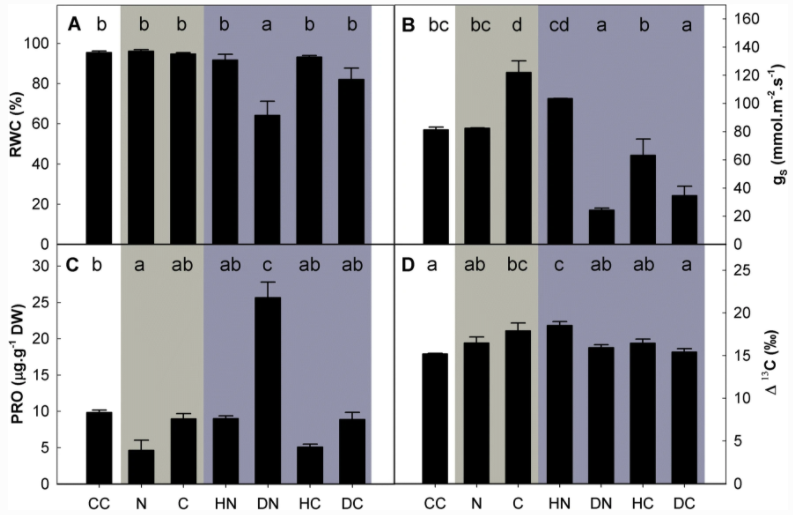 | Ferus, Peter; Barta, Marek; Konôpková, Jana Endophytic fungus Beauveria bassiana can enhance drought tolerance in red oak seedlings Journal Article Trees-Structure and Function, 33 (4), pp. 1179–1186, 2019, ISSN: 0931-1890. @article{Ferus2019, title = {Endophytic fungus \textit{Beauveria bassiana} can enhance drought tolerance in red oak seedlings}, author = {Peter Ferus and Marek Barta and Jana Konôpková }, doi = {10.1007/s00468-019-01854-1}, issn = {0931-1890}, year = {2019}, date = {2019-05-04}, journal = {Trees-Structure and Function}, volume = {33}, number = {4}, pages = {1179–1186}, abstract = {Endophytic fungi are known to be active in the plant environmental stress alleviation. In this work, we proved the ability of endophytic Beauveria bassiana, which is almost exclusively treated as an entomopathogenic fungus, in mitigating drought stress in dehydrated red oak (Quercus rubra L.) seedlings. Despite small differences between experiments, in general, leaf relative water content and stomatal conductance were less reduced (ca. 50% and 15%, respectively), free proline did not accumulate over the control level, carbon isotope 13C discrimination/water use efficiency was not affected and root growth was stimulated at a similar plant transpiration area in the endophyte-colonised individuals. Regression analysis revealed that the root growth stimulation provided by the fungus under drought had the most important effect on their water status.}, keywords = {}, pubstate = {published}, tppubtype = {article} } Endophytic fungi are known to be active in the plant environmental stress alleviation. In this work, we proved the ability of endophytic Beauveria bassiana, which is almost exclusively treated as an entomopathogenic fungus, in mitigating drought stress in dehydrated red oak (Quercus rubra L.) seedlings. Despite small differences between experiments, in general, leaf relative water content and stomatal conductance were less reduced (ca. 50% and 15%, respectively), free proline did not accumulate over the control level, carbon isotope 13C discrimination/water use efficiency was not affected and root growth was stimulated at a similar plant transpiration area in the endophyte-colonised individuals. Regression analysis revealed that the root growth stimulation provided by the fungus under drought had the most important effect on their water status. |
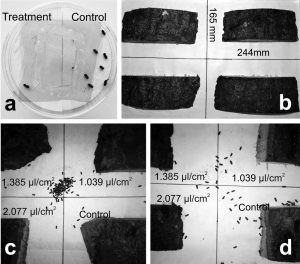 | Mudrončeková, S; Ferenčík, J; Gruľová, D; Barta, M Insecticidal and repellent effects of plant essential oils against Ips typographus Journal Article Journal of Pest Science, 92 (2), pp. 959-608, 2019, ISSN: 1612-4766. @article{Mudrončeková2018, title = {Insecticidal and repellent effects of plant essential oils against Ips typographus}, author = {S. Mudrončeková and J. Ferenčík and D. Gruľová and M. Barta}, url = {https://doi.org/10.1007/s10340-018-1038-1}, doi = {10.1007/s10340-018-1038-1}, issn = {1612-4766}, year = {2019}, date = {2019-03-01}, journal = {Journal of Pest Science}, volume = {92}, number = {2}, pages = {959-608}, abstract = {The Eurasian spruce bark beetle, Ips typographus (IT), is considered the most destructive insect pest of spruce forests in the Palaearctic region. Its control is based on a range of phytosanitary measures, insecticide treatments targeting the tree trunks, and pheromone trappings. Essential oils (EOs) from aromatic plants have been recognized as ecological alternatives to synthetic pesticides. In this study, EOs from plants in the Lamiaceae family (Origanum vulgare, Thymus vulgaris, Hyssopus officinalis and Mentha × piperita) and the Apiaceae family (Pimpinella anisum and Foeniculum vulgare) were studied for insecticidal and repellent effects against IT. EOs chemical composition was analyzed with gas chromatography mass spectrometry. IT adults were exposed to different concentrations of EOs, and their effects were recorded 2–96 h post-treatment. Significant differences in biological activity were observed, and the greatest insecticidal effect was detected for O. vulgare, T. vulgaris, and P. anisum; but O. vulgare EO was significantly more toxic at all doses or exposure times. Repellency index (RI) varied among the EOs and depended on dose and exposure time. At doses of 0.077‒0.219 μl/cm2, the RI increased until 4‒6 h post-treatment; after that period, it decreased. Pimpinella anisum, O. vulgare, and T. vulgaris EOs showed significantly higher repellent effects compared to F. vulgare and H. officinalis EOs. Mentha × piperita EOs exhibited neither repellent nor insecticidal activity against IT. To our knowledge, this is the first time that EOs biological activity against IT was studied.}, keywords = {}, pubstate = {published}, tppubtype = {article} } The Eurasian spruce bark beetle, Ips typographus (IT), is considered the most destructive insect pest of spruce forests in the Palaearctic region. Its control is based on a range of phytosanitary measures, insecticide treatments targeting the tree trunks, and pheromone trappings. Essential oils (EOs) from aromatic plants have been recognized as ecological alternatives to synthetic pesticides. In this study, EOs from plants in the Lamiaceae family (Origanum vulgare, Thymus vulgaris, Hyssopus officinalis and Mentha × piperita) and the Apiaceae family (Pimpinella anisum and Foeniculum vulgare) were studied for insecticidal and repellent effects against IT. EOs chemical composition was analyzed with gas chromatography mass spectrometry. IT adults were exposed to different concentrations of EOs, and their effects were recorded 2–96 h post-treatment. Significant differences in biological activity were observed, and the greatest insecticidal effect was detected for O. vulgare, T. vulgaris, and P. anisum; but O. vulgare EO was significantly more toxic at all doses or exposure times. Repellency index (RI) varied among the EOs and depended on dose and exposure time. At doses of 0.077‒0.219 μl/cm2, the RI increased until 4‒6 h post-treatment; after that period, it decreased. Pimpinella anisum, O. vulgare, and T. vulgaris EOs showed significantly higher repellent effects compared to F. vulgare and H. officinalis EOs. Mentha × piperita EOs exhibited neither repellent nor insecticidal activity against IT. To our knowledge, this is the first time that EOs biological activity against IT was studied. |
2018 |
|
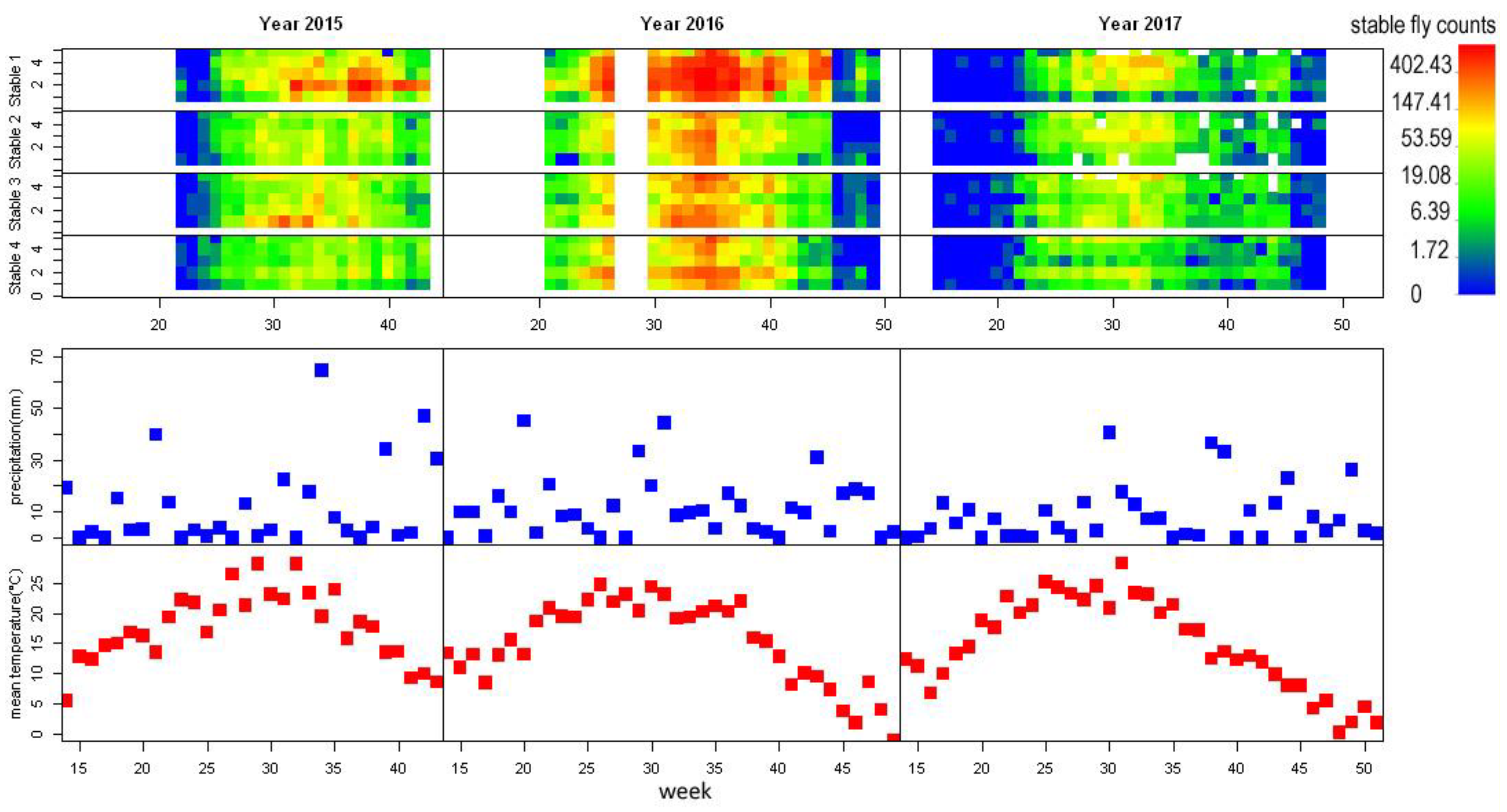 | Semelbauer, Marek; Mangová, Barbara; Barta, Marek; Kozánek, Milan The Factors Influencing Seasonal Dynamics and Spatial Distribution of Stable Fly Stomoxys calcitrans (Diptera, Muscidae) within Stables Journal Article Insects, 9 (4), 2018, ISSN: 2075-4450. @article{Semelbauer2018, title = {The Factors Influencing Seasonal Dynamics and Spatial Distribution of Stable Fly \textit{Stomoxys calcitrans} (Diptera, Muscidae) within Stables}, author = {Marek Semelbauer and Barbara Mangová and Marek Barta and Milan Kozánek}, doi = {10.3390/insects9040142}, issn = {2075-4450}, year = {2018}, date = {2018-10-16}, journal = {Insects}, volume = {9}, number = {4}, abstract = {The biology of the stable fly is fairly well known, but factors influencing the distribution of adult stable flies within stables are still inadequately investigated. The four experimental stables were located in south western Slovakia. Within each stable, five sticky traps were localized along the stable, and the flies were weekly counted during the flight season of years 2015–2017. Seasonal activity and stable fly abundance in relation to temperature, rainfall, light conditions, relative air humidity, and cows per stable were evaluated. The seasonal activity of the stable fly shows one large peak at the end of summer and a second smaller peak just before the end of the flight season. The spatial distribution of stable flies was unique for each stable. All of the environmental variables had significant and mostly positive effect on stable fly abundance. The strongest and most positive effect on stable fly counts was temperature and rainfall five weeks prior to collecting session. Within the stable, cow number, air humidity, and light conditions are the strongest candidates to influence their distribution.}, keywords = {}, pubstate = {published}, tppubtype = {article} } The biology of the stable fly is fairly well known, but factors influencing the distribution of adult stable flies within stables are still inadequately investigated. The four experimental stables were located in south western Slovakia. Within each stable, five sticky traps were localized along the stable, and the flies were weekly counted during the flight season of years 2015–2017. Seasonal activity and stable fly abundance in relation to temperature, rainfall, light conditions, relative air humidity, and cows per stable were evaluated. The seasonal activity of the stable fly shows one large peak at the end of summer and a second smaller peak just before the end of the flight season. The spatial distribution of stable flies was unique for each stable. All of the environmental variables had significant and mostly positive effect on stable fly abundance. The strongest and most positive effect on stable fly counts was temperature and rainfall five weeks prior to collecting session. Within the stable, cow number, air humidity, and light conditions are the strongest candidates to influence their distribution. |
 | Barta, M; Kautmanová, I; Čičková, H; Ferenčík, J; Florián, Š; Novotný, J; Kozánek, M The potential of Beauveria bassiana inoculum formulated into a polymeric matrix for a microbial control of spruce bark beetle Journal Article Biocontrol Science and Technology, 28 (7), pp. 718-735, 2018, ISSN: 1360-0478. @article{Barta2018b, title = {The potential of Beauveria bassiana inoculum formulated into a polymeric matrix for a microbial control of spruce bark beetle}, author = {M. Barta and I. Kautmanová and H. Čičková and J. Ferenčík and Š. Florián and J. Novotný and M. Kozánek}, url = {https://doi.org/10.1080/09583157.2018.1487027}, doi = {10.1080/09583157.2018.1487027}, issn = {1360-0478}, year = {2018}, date = {2018-06-13}, journal = {Biocontrol Science and Technology}, volume = {28}, number = {7}, pages = {718-735}, abstract = {Two local strains of Beauveria bassiana originally isolated from naturally infected spruce bark beetles in Slovakia were tested for their virulence to Ips typographus (IT) and for their compatibility with a polymeric matrix composed of low-molecular polyethylene. Conidia could be homogenously immobilized in the low-molecular polyethylene matrix with no adverse effect on their viability and infectivity. At constant temperature (25°C), viability of immobilized conidial decreased only by 1–2% after 7 or 14 days when compared with non-formulated conidia. In field conditions, viability of conidia formulated in the matrix was even significantly higher than non-formulated conidia 35 days after their application in traps. Conidia incorporated into the polymeric matrix were infective to IT adults in laboratory bioassays. Mean values of LC50 for native conidia (0.72–2.05 × 106 conidia ml−1) and conidia immobilized in the polymeric matrix (0.64–1.03 × 105 conidia mm−2) demonstrated high virulence. The efficacy of the local strains was significantly higher than that of B. bassiana strains from mycoinsecticides (Boverol®, Botanigard® ES and Naturalis-L®). Results showed potential of this polymeric material for its use in microbial control of IT when mixed with conidia of B. bassiana.}, keywords = {}, pubstate = {published}, tppubtype = {article} } Two local strains of Beauveria bassiana originally isolated from naturally infected spruce bark beetles in Slovakia were tested for their virulence to Ips typographus (IT) and for their compatibility with a polymeric matrix composed of low-molecular polyethylene. Conidia could be homogenously immobilized in the low-molecular polyethylene matrix with no adverse effect on their viability and infectivity. At constant temperature (25°C), viability of immobilized conidial decreased only by 1–2% after 7 or 14 days when compared with non-formulated conidia. In field conditions, viability of conidia formulated in the matrix was even significantly higher than non-formulated conidia 35 days after their application in traps. Conidia incorporated into the polymeric matrix were infective to IT adults in laboratory bioassays. Mean values of LC50 for native conidia (0.72–2.05 × 106 conidia ml−1) and conidia immobilized in the polymeric matrix (0.64–1.03 × 105 conidia mm−2) demonstrated high virulence. The efficacy of the local strains was significantly higher than that of B. bassiana strains from mycoinsecticides (Boverol®, Botanigard® ES and Naturalis-L®). Results showed potential of this polymeric material for its use in microbial control of IT when mixed with conidia of B. bassiana. |
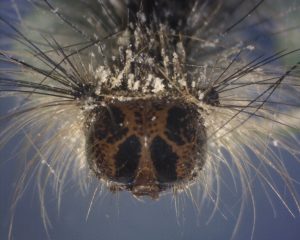 | Zúbrik, M; Pilarska, D; Kulfan, J; Barta, M; Hajek, A E; Bittner, T D; Zach, P; Takov, D; Kunca, A; Rell, S; Hirka, A; Csóka, G Journal of Invertebrate Pathology, 155 , pp. 52-54, 2018, ISSN: 0022-2011. @article{Zúbrik2018, title = {Phytophagous larvae occurring in Central and Southeastern European oak forests as a potential host of Entomophaga maimaiga (Entomophthorales: Entomophthoraceae) – A field study}, author = {M. Zúbrik and D. Pilarska and J. Kulfan and M. Barta and A.E. Hajek and T.D. Bittner and P. Zach and D. Takov and A. Kunca and S. Rell and A. Hirka and G. Csóka}, url = {https://doi.org/10.1016/j.jip.2018.05.003}, doi = {10.1016/j.jip.2018.05.003}, issn = {0022-2011}, year = {2018}, date = {2018-05-11}, journal = {Journal of Invertebrate Pathology}, volume = {155}, pages = {52-54}, abstract = {We evaluated the presence and impact of Entomophaga maimaiga on both target and non-target phytophagous larvae. All six study plots, with low gypsy moth population density, were situated in Central and Southeastern European oak forests and E. maimaiga had previously been reported from these plots. Totally, 45 of 4,045 (1.13%) collected non-target larvae died due to fungal infections. No non-target insect specimen was infected by E. maimaiga, although the presence of the pathogen could not be fully excluded in three cadavers. Out of 1,780 L. dispar larvae collected, 15 individuals (0.84%) were infected by E. maimaiga.}, keywords = {}, pubstate = {published}, tppubtype = {article} } We evaluated the presence and impact of Entomophaga maimaiga on both target and non-target phytophagous larvae. All six study plots, with low gypsy moth population density, were situated in Central and Southeastern European oak forests and E. maimaiga had previously been reported from these plots. Totally, 45 of 4,045 (1.13%) collected non-target larvae died due to fungal infections. No non-target insect specimen was infected by E. maimaiga, although the presence of the pathogen could not be fully excluded in three cadavers. Out of 1,780 L. dispar larvae collected, 15 individuals (0.84%) were infected by E. maimaiga. |
 | Jánošíková-Hečková, Z; Ondrušková, E; Barta, M; Ostrovský, R; Kádasi-Horáková, M; Pastirčáková, K; Kobza, M; Adamčíková, K The hosts and geographic range of Dothistroma needle blight in Slovakia Journal Article Forest Pathology, 48 (3), pp. e12421, 2018, ISSN: 1437-4781. @article{Jánošíková-Hečková2018, title = {The hosts and geographic range of Dothistroma needle blight in Slovakia}, author = {Z. Jánošíková-Hečková and E. Ondrušková and M. Barta and R. Ostrovský and M. Kádasi-Horáková and K. Pastirčáková and M. Kobza and K. Adamčíková }, url = {https://onlinelibrary.wiley.com/doi/abs/10.1111/efp.12421}, doi = {10.1111/efp.12421}, issn = {1437-4781}, year = {2018}, date = {2018-02-15}, journal = {Forest Pathology}, volume = {48}, number = {3}, pages = {e12421}, abstract = {The occurrence and distribution of Dothistroma needle blight (DNB) were studied in 2014–2017 around Slovakia. A total of 84 localities, both native and planted, were investigated, and the presence of DNB was confirmed in 73 of them. In all positive locations, symptoms typical of DNB were observed and the Dothistroma species was confirmed using species-specific primers either from fungal cultures or directly from needles. Both Dothistroma species—D. septosporum and D. pini—were identified. Both species occurred together in 29 locations, only D. septosporum in 42 and only D. pini in two locations. The host range of D. septosporum included 10 pine species and two spruce species. The host range of D. pini comprised the same number of pine hosts but only one spruce species. Five pine hosts, P. aristata, P. coulteri, P. densiflora, P. jeffreyi, P. × schwerinii, and one spruce host P. abies are new hosts species of D. pini. P. densiflora and Picea pungens have earlier been reported to be susceptible for DNB. In this study, D. septosporum was found from both tree species.}, keywords = {}, pubstate = {published}, tppubtype = {article} } The occurrence and distribution of Dothistroma needle blight (DNB) were studied in 2014–2017 around Slovakia. A total of 84 localities, both native and planted, were investigated, and the presence of DNB was confirmed in 73 of them. In all positive locations, symptoms typical of DNB were observed and the Dothistroma species was confirmed using species-specific primers either from fungal cultures or directly from needles. Both Dothistroma species—D. septosporum and D. pini—were identified. Both species occurred together in 29 locations, only D. septosporum in 42 and only D. pini in two locations. The host range of D. septosporum included 10 pine species and two spruce species. The host range of D. pini comprised the same number of pine hosts but only one spruce species. Five pine hosts, P. aristata, P. coulteri, P. densiflora, P. jeffreyi, P. × schwerinii, and one spruce host P. abies are new hosts species of D. pini. P. densiflora and Picea pungens have earlier been reported to be susceptible for DNB. In this study, D. septosporum was found from both tree species. |
 | Barta, M In planta bioassay on the effects of endophytic Beauveria strains against larvae of horse-chestnut leaf miner (Cameraria ohridella) Journal Article Biological Control, 121 , pp. 88-98, 2018, ISSN: 1049-9644. @article{Barta2018c, title = {In planta bioassay on the effects of endophytic Beauveria strains against larvae of horse-chestnut leaf miner (Cameraria ohridella)}, author = {M. Barta}, url = {https://doi.org/10.1016/j.biocontrol.2018.02.013}, doi = {10.1016/j.biocontrol.2018.02.013}, issn = {1049-9644}, year = {2018}, date = {2018-02-14}, journal = {Biological Control}, volume = {121}, pages = {88-98}, abstract = {Cameraria ohridella is a major pest of horse-chestnut trees in Europe causing permanent outbreaks and severe defoliations. Entomopathogenic Beauveria species are common mortality factors of C. ohridella pupae overwintering in leaf litters. In this study, laboratory bioassays were conducted to determine the ability of local Beauveria strains to colonize horse-chestnut leaves endophytically and test their antagonistic activity against C. ohridella in colonized leaves. Two strains of Beauveria bassiana (AM_EF0111 isolated from horse-chestnut leaf tissue and AM_EP0715 isolated from a C. ohridella pupa) and one strain of B. pseudobassiana (AM_SO1015 obtained from soil) were used for in planta bioassays. The selected strains demonstrated high virulence to leaf miner pupae after a topical treatment with spore suspensions. LC50 ranged between 2.49 and 3.19 × 106 conidia ml−1. Horse-chestnut saplings were inoculated with the fungi through their direct immersion into spore suspensions (107 conidia ml−1). Endophytic colonization was successful and a mean colonization rate reached 57.44–66.08% 15 days post-inoculation. It decreased over time for all strains, but the fungi were still present in leaf tissue 54 days post-inoculation. AM_EF0111 strain was significantly more effective in colonizing saplings than AM_SO1015 and AM_EP0715. Fungus-colonized and untreated (control) saplings were infested with the leaf miner 31 days after inoculation and development of larval mines was monitored. In Beauveria-colonized saplings, damage by leaf miner was significantly lower compared to control plants. On day 23 post-infestation, the damaged leaf area of colonized leaves was 5-times smaller compared to control saplings. The negative effect on larval tunneling was significantly greater for strain AM_EP0715 than for the other two strains. Survival of leaf miners was considerably affected in colonized leaves, but mycosis was detected only in 5.41–9.23% of cadavers. No mycosed individuals were collected from control saplings. Pupae from colonized leaves were smaller in dimensions with lower weight than pupae form control plants. The same Beauveria strains recovered from leaves at the end of colonization bioassays showed no significant decrease in LC50 values.}, keywords = {}, pubstate = {published}, tppubtype = {article} } Cameraria ohridella is a major pest of horse-chestnut trees in Europe causing permanent outbreaks and severe defoliations. Entomopathogenic Beauveria species are common mortality factors of C. ohridella pupae overwintering in leaf litters. In this study, laboratory bioassays were conducted to determine the ability of local Beauveria strains to colonize horse-chestnut leaves endophytically and test their antagonistic activity against C. ohridella in colonized leaves. Two strains of Beauveria bassiana (AM_EF0111 isolated from horse-chestnut leaf tissue and AM_EP0715 isolated from a C. ohridella pupa) and one strain of B. pseudobassiana (AM_SO1015 obtained from soil) were used for in planta bioassays. The selected strains demonstrated high virulence to leaf miner pupae after a topical treatment with spore suspensions. LC50 ranged between 2.49 and 3.19 × 106 conidia ml−1. Horse-chestnut saplings were inoculated with the fungi through their direct immersion into spore suspensions (107 conidia ml−1). Endophytic colonization was successful and a mean colonization rate reached 57.44–66.08% 15 days post-inoculation. It decreased over time for all strains, but the fungi were still present in leaf tissue 54 days post-inoculation. AM_EF0111 strain was significantly more effective in colonizing saplings than AM_SO1015 and AM_EP0715. Fungus-colonized and untreated (control) saplings were infested with the leaf miner 31 days after inoculation and development of larval mines was monitored. In Beauveria-colonized saplings, damage by leaf miner was significantly lower compared to control plants. On day 23 post-infestation, the damaged leaf area of colonized leaves was 5-times smaller compared to control saplings. The negative effect on larval tunneling was significantly greater for strain AM_EP0715 than for the other two strains. Survival of leaf miners was considerably affected in colonized leaves, but mycosis was detected only in 5.41–9.23% of cadavers. No mycosed individuals were collected from control saplings. Pupae from colonized leaves were smaller in dimensions with lower weight than pupae form control plants. The same Beauveria strains recovered from leaves at the end of colonization bioassays showed no significant decrease in LC50 values. |
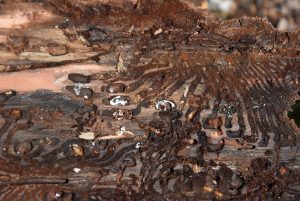 | Barta, M; Kautmanová, I; Čičková, H; Ferenčík, J; Florián, Š; Novotný, J; Kozánek, M Biologia, 73 (1), pp. 53-65, 2018, ISSN: 1336-9563. @article{Barta2018, title = {Hypocrealean fungi associated with populations of Ips typographus in West Carpathians and selection of local Beauveria strains for effective bark beetle control}, author = {M. Barta and I. Kautmanová and H. Čičková and J. Ferenčík and Š. Florián and J. Novotný and M. Kozánek}, url = {https://doi.org/10.2478/s11756-018-0005-x}, doi = {10.2478/s11756-018-0005-x}, issn = {1336-9563}, year = {2018}, date = {2018-02-05}, journal = {Biologia}, volume = {73}, number = {1}, pages = {53-65}, abstract = {In Slovakia, a diversity of entomopathogenic fungi (Ascomycota, Hypocreales) associated with outbreaks of Ips typographus was studied in 81 localities and as many as 113 in vitro cultures of five entomopathogenic species were isolated from infected individuals: Beauveria bassiana (87 isolates), B. pseudobassiana (14 isolates), B. caledonica (6 isolates), Lecanicillium lecanii (4 isolates) and Isaria farinosa (2 isolates). B. pseudobassiana is recorded in natural populations of I. typographus for the first time. Biological properties of selected Beauveria isolates, including colony growth, biomass production, conidia yield and pathogenicity to I. typographus adults, were studied in a series of laboratory bioassays and much intra- and interspecific variability was detected. B. bassiana isolates produced biomass or conidia at significantly higher rate than B. pseudobassiana and B. caledonica isolates. Two B. bassiana isolates were selected as the most virulent to bark beetle adults, demonstrating a mean LC50 ranging from 0.72 to 2.05 × 106 conidia ml−1, and were qualified as promising candidates for biocontrol of I. typographus. Their virulence was significantly higher than that of the mycoinsecticides Boverol®, which was used as a reference strain in the virulence bioassays.}, keywords = {}, pubstate = {published}, tppubtype = {article} } In Slovakia, a diversity of entomopathogenic fungi (Ascomycota, Hypocreales) associated with outbreaks of Ips typographus was studied in 81 localities and as many as 113 in vitro cultures of five entomopathogenic species were isolated from infected individuals: Beauveria bassiana (87 isolates), B. pseudobassiana (14 isolates), B. caledonica (6 isolates), Lecanicillium lecanii (4 isolates) and Isaria farinosa (2 isolates). B. pseudobassiana is recorded in natural populations of I. typographus for the first time. Biological properties of selected Beauveria isolates, including colony growth, biomass production, conidia yield and pathogenicity to I. typographus adults, were studied in a series of laboratory bioassays and much intra- and interspecific variability was detected. B. bassiana isolates produced biomass or conidia at significantly higher rate than B. pseudobassiana and B. caledonica isolates. Two B. bassiana isolates were selected as the most virulent to bark beetle adults, demonstrating a mean LC50 ranging from 0.72 to 2.05 × 106 conidia ml−1, and were qualified as promising candidates for biocontrol of I. typographus. Their virulence was significantly higher than that of the mycoinsecticides Boverol®, which was used as a reference strain in the virulence bioassays. |
Hricáková, Nikola; Medo, Juraj; Hleba, Lukáš; Barta, Marek; Maková, Jana Use of MALDI-TOF mass spectrometry in rapid identification of Beauveria bassiana and Beauveria pseudobassiana Journal Article Journal of Central European Agriculture, 19 (2), pp. 394-407, 2018, ISSN: 1332-9049. @article{Hricáková2018, title = {Use of MALDI-TOF mass spectrometry in rapid identification of \textit{Beauveria bassiana} and \textit{Beauveria pseudobassiana}}, author = {Nikola Hricáková and Juraj Medo and Lukáš Hleba and Marek Barta and Jana Maková}, doi = {10.5513/JCEA01/19.2.2151}, issn = {1332-9049}, year = {2018}, date = {2018-01-01}, journal = {Journal of Central European Agriculture}, volume = {19}, number = {2}, pages = {394-407}, abstract = {Species of the genus Beauveria are entomopathogenic fungi used in biological control to protect against insect pests. Identification of species is based on observation of morphological, phylogenetic and genetic differences. Currently, MALDI-TOF (Matrix Assisted Laser Desorption/Ionization- Time of Flight) mass spectrometry is often used in microbial diagnostic but identification of Beauveria species has not been tested before. The aim of this work was the possibilities of this method and to compare it with genetic analysis. Twenty strains of B. bassiana and B. pseudobassiana isolated from insect cadavers, mycoinsecticides and soil samples were used. Sequences of ITS (Internal Transcribed Spacer) region were used for genetic identification of strains. Sequences and results from protein analysis of isolates were compared with the reference strains of B. bassiana and B. pseudobassiana. Results of MALDI Biotyper softvare identification were correct for all strains. Identification was reliable with high log score (>2.1) for most of strains. Score value less than 1 was observed only in a single case - strain GHA isolated from mycoinsecticide Botanigard.The result of both analyses was also dendrogram (phylogenetic tree) which showed high degree of result consistence. MALDI-TOF identification of fungi from Beauveria genus is usable for fast and reliable identification of entomopathogenic fungi isolates acquired from environment and results can be utilized in conservation biocontrol strategies in agriculture and forest ecosystems.}, keywords = {}, pubstate = {published}, tppubtype = {article} } Species of the genus Beauveria are entomopathogenic fungi used in biological control to protect against insect pests. Identification of species is based on observation of morphological, phylogenetic and genetic differences. Currently, MALDI-TOF (Matrix Assisted Laser Desorption/Ionization- Time of Flight) mass spectrometry is often used in microbial diagnostic but identification of Beauveria species has not been tested before. The aim of this work was the possibilities of this method and to compare it with genetic analysis. Twenty strains of B. bassiana and B. pseudobassiana isolated from insect cadavers, mycoinsecticides and soil samples were used. Sequences of ITS (Internal Transcribed Spacer) region were used for genetic identification of strains. Sequences and results from protein analysis of isolates were compared with the reference strains of B. bassiana and B. pseudobassiana. Results of MALDI Biotyper softvare identification were correct for all strains. Identification was reliable with high log score (>2.1) for most of strains. Score value less than 1 was observed only in a single case - strain GHA isolated from mycoinsecticide Botanigard.The result of both analyses was also dendrogram (phylogenetic tree) which showed high degree of result consistence. MALDI-TOF identification of fungi from Beauveria genus is usable for fast and reliable identification of entomopathogenic fungi isolates acquired from environment and results can be utilized in conservation biocontrol strategies in agriculture and forest ecosystems. | |
2017 |
|
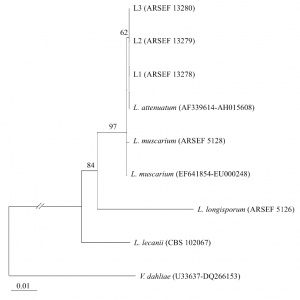 | Montalva, C; Valenzuela, E; Barta, M; Rojas, E; Arismendi, N; Rodrigues, J; Humber, R A Lecanicillium attenuatum isolates affecting the invasive cypress aphid (Cinara cupressi) in Chile Journal Article BioControl, 62 (5), pp. 625–637, 2017, ISSN: 1386-6141. @article{Montalva2017, title = {\textit{Lecanicillium attenuatum} isolates affecting the invasive cypress aphid (\textit{Cinara cupressi}) in Chile}, author = {C. Montalva and E. Valenzuela and M. Barta and E. Rojas and N. Arismendi and J. Rodrigues and R.A. Humber}, url = {https://link.springer.com/article/10.1007/s10526-017-9817-9}, doi = {10.1007/s10526-017-9817-9}, issn = {1386-6141}, year = {2017}, date = {2017-05-16}, journal = {BioControl}, volume = {62}, number = {5}, pages = {625–637}, abstract = {The cypress aphid (Cinara cupressi) is listed among the hundred most important invasive pests in the world. In Chile, it was first detected in 2003 and currently is present throughout the country. In the course of a survey of their natural enemies in Chile, three strains of entomopathogenic fungi were isolated. The isolates were identified and tested against the aphid in laboratory experiments. Two further entomopathogenic fungi (ARSEF 5126 and 5128), formulated in the mycoinsecticides Vertalec and Mycotal, were used as reference strains. The three Chilean isolates were identified genomically as Lecanicillium attenuatum and were pathogenic to third-instar nymphs. The isolate ARSEF 13279 yielded the lowest overall lethal concentration (LC50), 3 x 105 conidia ml-1 at four days post-inoculation, and the shortest lethal time (LT50), 3.7 days after inoculation with 106 conidia ml-1. The results indicate that the isolates have considerable potential as microbial control agents of the invasive cypress aphid.}, keywords = {}, pubstate = {published}, tppubtype = {article} } The cypress aphid (Cinara cupressi) is listed among the hundred most important invasive pests in the world. In Chile, it was first detected in 2003 and currently is present throughout the country. In the course of a survey of their natural enemies in Chile, three strains of entomopathogenic fungi were isolated. The isolates were identified and tested against the aphid in laboratory experiments. Two further entomopathogenic fungi (ARSEF 5126 and 5128), formulated in the mycoinsecticides Vertalec and Mycotal, were used as reference strains. The three Chilean isolates were identified genomically as Lecanicillium attenuatum and were pathogenic to third-instar nymphs. The isolate ARSEF 13279 yielded the lowest overall lethal concentration (LC50), 3 x 105 conidia ml-1 at four days post-inoculation, and the shortest lethal time (LT50), 3.7 days after inoculation with 106 conidia ml-1. The results indicate that the isolates have considerable potential as microbial control agents of the invasive cypress aphid. |
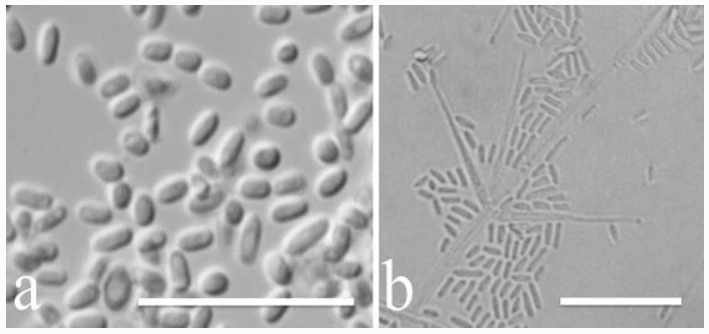 | Montalva, Cristian; Valenzuela, Eduardo; Barta, Marek; Rojas, Eladio; Arismendi, Nolberto; Rodrigues, Juscelino; Humber, Richard A Lecanicillium attenuatum isolates affecting the invasive cypress aphid (Cinara cupressi) in Chile Journal Article BioControl, 62 (5), pp. 625-637, 2017, ISSN: 1386-6141. @article{Montalva2017b, title = {\textit{Lecanicillium attenuatum} isolates affecting the invasive cypress aphid (\textit{Cinara cupressi}) in Chile}, author = {Cristian Montalva and Eduardo Valenzuela and Marek Barta and Eladio Rojas and Nolberto Arismendi and Juscelino Rodrigues and Richard A. Humber }, doi = {10.1007/s10526-017-9817-9}, issn = {1386-6141}, year = {2017}, date = {2017-05-16}, journal = {BioControl}, volume = {62}, number = {5}, pages = {625-637}, abstract = {The cypress aphid (Cinara cupressi) is listed among the hundred most important invasive pests in the world. In Chile, it was first detected in 2003 and currently is present throughout the country. In the course of a survey of their natural enemies in Chile, three strains of entomopathogenic fungi were isolated. The isolates were identified and tested against the aphid in laboratory experiments. Two further entomopathogenic fungi (ARSEF 5126 and 5128), formulated in the mycoinsecticides Vertalec® and Mycotal®, were used as reference strains. The three Chilean isolates were identified genomically as Lecanicillium attenuatum and were pathogenic to third-instar nymphs. The isolate ARSEF 13279 yielded the lowest overall lethal concentration (LC50), 3 × 105 conidia ml−1 at four days post-inoculation, and the shortest lethal time (LT50), 3.7 days after inoculation with 106 conidia ml−1. The results indicate that the isolates have considerable potential as microbial control agents of the invasive cypress aphid.}, keywords = {}, pubstate = {published}, tppubtype = {article} } The cypress aphid (Cinara cupressi) is listed among the hundred most important invasive pests in the world. In Chile, it was first detected in 2003 and currently is present throughout the country. In the course of a survey of their natural enemies in Chile, three strains of entomopathogenic fungi were isolated. The isolates were identified and tested against the aphid in laboratory experiments. Two further entomopathogenic fungi (ARSEF 5126 and 5128), formulated in the mycoinsecticides Vertalec® and Mycotal®, were used as reference strains. The three Chilean isolates were identified genomically as Lecanicillium attenuatum and were pathogenic to third-instar nymphs. The isolate ARSEF 13279 yielded the lowest overall lethal concentration (LC50), 3 × 105 conidia ml−1 at four days post-inoculation, and the shortest lethal time (LT50), 3.7 days after inoculation with 106 conidia ml−1. The results indicate that the isolates have considerable potential as microbial control agents of the invasive cypress aphid. |
2016 |
|
 | Barta, M; Bibeň, T Stephanitis takeyai and S. rhododendri (Heteroptera: Tingidae) in Slovakia: first record and economic importance Journal Article Plant Protection Research, 56 (2), pp. 193-198, 2016, ISBN: 1899-007X. @article{Barta2016b, title = {\textit{Stephanitis takeyai} and \textit{S. rhododendri} (Heteroptera: \textit{Tingidae}) in Slovakia: first record and economic importance}, author = {M. Barta and T. Bibeň}, url = {https://www.degruyter.com/view/j/jppr.2016.56.issue-2/jppr-2016-0022/jppr-2016-0022.xml}, doi = {DOI: 10.1515/jppr-2016-0022}, isbn = {1899-007X}, year = {2016}, date = {2016-07-08}, journal = {Plant Protection Research}, volume = {56}, number = {2}, pages = {193-198}, abstract = {This is the first report on the occurrence of andromeda lace bug, Stephanitis (Stephanitis) takeyai Drake and Maa, 1955, and rhododendron lace bug, Stephanitis (Stephanitis) rhododendri Horvath, 1905, in Slovakia. Syntopic colonies of both species were found on rhododendron shrubs (Rhododendron sp.) in south-western Slovakia in 2015. The feeding of the lace bugs resulted in damage to infested rhododendrons. Leaves turned yellow and brown, prematurely dropped what led to continuous drying up of twigs and the whole plants. Details on morphology of adult stages of the two species, description of damage symptoms and economic importance of these pests are presented and discussed.}, keywords = {}, pubstate = {published}, tppubtype = {article} } This is the first report on the occurrence of andromeda lace bug, Stephanitis (Stephanitis) takeyai Drake and Maa, 1955, and rhododendron lace bug, Stephanitis (Stephanitis) rhododendri Horvath, 1905, in Slovakia. Syntopic colonies of both species were found on rhododendron shrubs (Rhododendron sp.) in south-western Slovakia in 2015. The feeding of the lace bugs resulted in damage to infested rhododendrons. Leaves turned yellow and brown, prematurely dropped what led to continuous drying up of twigs and the whole plants. Details on morphology of adult stages of the two species, description of damage symptoms and economic importance of these pests are presented and discussed. |
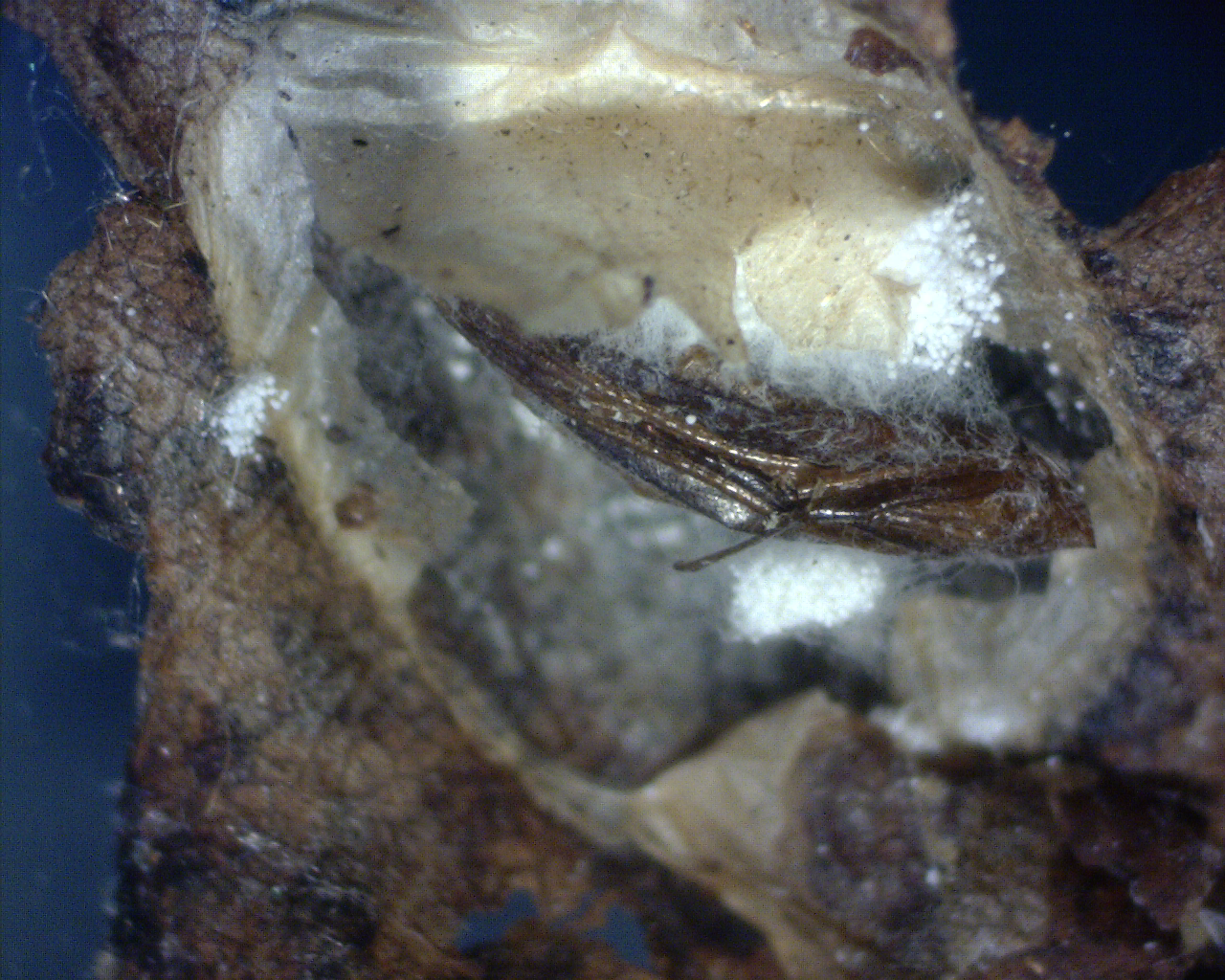 | Schemmer, R; Chládeková, P; Medo, J; Barta, M Plant Protection Science, 52 (3), pp. 199-208, 2016, ISSN: 1805-9341. @article{Schemmer2016, title = {Natural prevalence of entomopathogenic fungi in hibernating pupae of \textit{Cameraria ohridella} (Lepidoptera: \textit{Gracillariidae}) and virulence of selected isolates}, author = {R. Schemmer and P. Chládeková and J. Medo and M. Barta}, url = {http://www.agriculturejournals.cz/publicFiles/189075.pdf}, doi = {doi: 10.17221/110/2015-PPS}, issn = {1805-9341}, year = {2016}, date = {2016-05-17}, journal = {Plant Protection Science}, volume = {52}, number = {3}, pages = {199-208}, abstract = {Spontaneous infection of hibernating Cameraria ohridella pupae by entomopathogenic fungi was monitored at two localities of south-western Slovakia and efficacy of selected fungal isolates against the pupae was evaluated in laboratory. Natural prevalence of fungal infection in pupal populations was low (< 7%) and varied depending upon collecting date, locality, year, and pathogen. Ten isolates of three fungal species, Beauveria pseudobassiana, Isaria fumosorosea, and I. farinosa, isolated from the naturally infected pupae and three isolates of non-insect origin of two fungi, B. bassiana and Metarhizium anisopliae, were screened for colony growth, conidial production in vitro, and virulence to C. ohridella pupae. A significant variability in the evaluated traits was detected among the isolates. Pupae demonstrated vulnerability to all the isolates irrespective of their origin, however virulence of isolates varied significantly. I. fumosorosea was the most virulent fungus with median lethal concentration of 0.09 × 104 conidia/ml (isolate CO10-IFu) and mean survival time of pupae of 7.14 days (isolate CO8-IFu). No correlation between conidial yield of isolates and fungal virulence was observed, but a moderately strong relationship was detected between virulence and mycelial growth rate of isolates. }, keywords = {}, pubstate = {published}, tppubtype = {article} } Spontaneous infection of hibernating Cameraria ohridella pupae by entomopathogenic fungi was monitored at two localities of south-western Slovakia and efficacy of selected fungal isolates against the pupae was evaluated in laboratory. Natural prevalence of fungal infection in pupal populations was low (< 7%) and varied depending upon collecting date, locality, year, and pathogen. Ten isolates of three fungal species, Beauveria pseudobassiana, Isaria fumosorosea, and I. farinosa, isolated from the naturally infected pupae and three isolates of non-insect origin of two fungi, B. bassiana and Metarhizium anisopliae, were screened for colony growth, conidial production in vitro, and virulence to C. ohridella pupae. A significant variability in the evaluated traits was detected among the isolates. Pupae demonstrated vulnerability to all the isolates irrespective of their origin, however virulence of isolates varied significantly. I. fumosorosea was the most virulent fungus with median lethal concentration of 0.09 × 104 conidia/ml (isolate CO10-IFu) and mean survival time of pupae of 7.14 days (isolate CO8-IFu). No correlation between conidial yield of isolates and fungal virulence was observed, but a moderately strong relationship was detected between virulence and mycelial growth rate of isolates. |
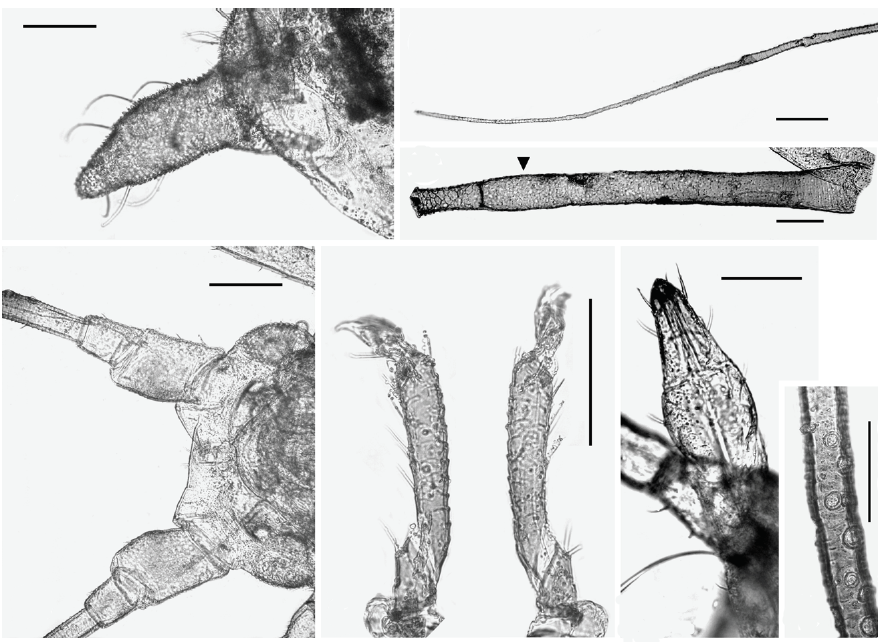 | Kollár, J; Barta, M The first record of tulip tree aphid, Illinoia liriodendri (Hemiptera: Aphididae), from Slovakia – Short Communication Journal Article Plant Protection Science, 52 (2), pp. 142-146, 2016, ISSN: 1212-2580. @article{Kollár2016, title = {The first record of tulip tree aphid, \textit{Illinoia liriodendri} (Hemiptera: \textit{Aphididae}), from Slovakia – Short Communication}, author = {J. Kollár and M. Barta}, url = {http://www.agriculturejournals.cz/publicFiles/178824.pdf}, doi = {DOI: 10.17221/109/2015-PPS}, issn = {1212-2580}, year = {2016}, date = {2016-05-17}, journal = {Plant Protection Science}, volume = {52}, number = {2}, pages = {142-146}, abstract = {The tulip tree aphid, Illinoia liriodendri, is reported in Slovakia for the first time. Colonies of I. liriodendri were found on tulip trees, Liriodendron tulipifera, in two locations of south-western Slovakia in 2014 and 2015. Colonies of nymphs and viviparous females fed on the underside of leaves with no significant symptoms of damage to tulip trees. In this short study, the first report of the aphid from Slovakia is presented and original illustrations with results of morphometric analysis of alate viviparous females are provided.}, keywords = {}, pubstate = {published}, tppubtype = {article} } The tulip tree aphid, Illinoia liriodendri, is reported in Slovakia for the first time. Colonies of I. liriodendri were found on tulip trees, Liriodendron tulipifera, in two locations of south-western Slovakia in 2014 and 2015. Colonies of nymphs and viviparous females fed on the underside of leaves with no significant symptoms of damage to tulip trees. In this short study, the first report of the aphid from Slovakia is presented and original illustrations with results of morphometric analysis of alate viviparous females are provided. |
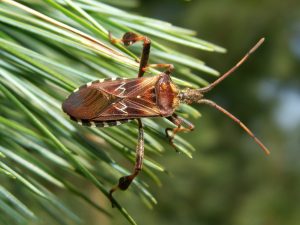 | Barta, M Biology and temperature requirements of the invasive seed bug Leptoglossus occidentalis (Heteroptera: Coreidae) in Europe. Journal Article Journal of Pest Science, 89 (1), pp. 31-44, 2016, ISSN: 1612-4758. @article{Barta2016, title = {Biology and temperature requirements of the invasive seed bug \textit{Leptoglossus occidentalis} (Heteroptera: Coreidae) in Europe.}, author = {M. Barta}, url = {https://link.springer.com/article/10.1007/s10340-015-0673-z}, doi = {10.1007/s10340-015-0673-z}, issn = {1612-4758}, year = {2016}, date = {2016-03-01}, journal = {Journal of Pest Science}, volume = {89}, number = {1}, pages = {31-44}, abstract = {Leptoglossus occidentalis, a species native to North America, has been expanding through European conifer forests. The fast spread across the European continent demonstrates its great invasive potential and poses a threat to conifer seed orchards. To better understand its potential distribution and population growth in infested regions, the temperature-dependent development in laboratory as well as life history, phenology, and winter survival were investigated in southern Slovakia during 2009-2011. The lower temperature thresholds to complete embryonic and postembryonic development estimated with the linear model were 13.38 and 14.37 degrees C, respectively. The number of degree-days required for completion of development from egg to adult estimated by the linear model was 533 degrees C. Overwintered adults or late nymphal instars became active in mid-March, oviposition was not observed before mid-April, and nymphs passing through five stages reached adulthood after mid-July. Individual females laid on average 31 eggs (max 78). The second generation started in August but did not complete its development till winter, although part of the 5th instar nymphs did survive until spring. Using temperature data of 41 localities across Europe and cumulative degree-days for complete life cycle, a prediction of the potential number of generations per year was made. In conditions of southern Slovakia L. occidentalis was univoltine, but up to four generations per year were estimated depending on the locality in Europe.}, keywords = {}, pubstate = {published}, tppubtype = {article} } Leptoglossus occidentalis, a species native to North America, has been expanding through European conifer forests. The fast spread across the European continent demonstrates its great invasive potential and poses a threat to conifer seed orchards. To better understand its potential distribution and population growth in infested regions, the temperature-dependent development in laboratory as well as life history, phenology, and winter survival were investigated in southern Slovakia during 2009-2011. The lower temperature thresholds to complete embryonic and postembryonic development estimated with the linear model were 13.38 and 14.37 degrees C, respectively. The number of degree-days required for completion of development from egg to adult estimated by the linear model was 533 degrees C. Overwintered adults or late nymphal instars became active in mid-March, oviposition was not observed before mid-April, and nymphs passing through five stages reached adulthood after mid-July. Individual females laid on average 31 eggs (max 78). The second generation started in August but did not complete its development till winter, although part of the 5th instar nymphs did survive until spring. Using temperature data of 41 localities across Europe and cumulative degree-days for complete life cycle, a prediction of the potential number of generations per year was made. In conditions of southern Slovakia L. occidentalis was univoltine, but up to four generations per year were estimated depending on the locality in Europe. |
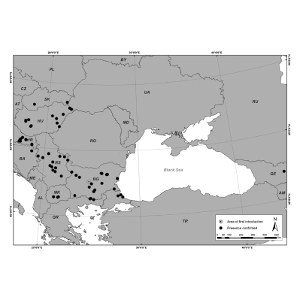 | Zúbrik, M; Hajek, A; Pilarska, D; Špilda, I; Georgiev, G; Hrašovec, B; Hirka, A; Goertz, D; Hoch, G; Barta, M; Saniga, M; Kunca, A; Nikolov, C; Vakula, J; Galko, J; Pilarski, P; Csóka, G The potential for Entomophaga maimaiga to regulate gypsy moth Lymantria dispar (L.) (Lepidoptera; Erebidae) in Europe Journal Article Journal of Applied Entomology, 140 (8), pp. 565–579, 2016, ISSN: 1439-0418. @article{Zúbrik2016, title = {The potential for \textit{Entomophaga maimaiga} to regulate gypsy moth \textit{Lymantria dispar} (L.) (Lepidoptera; \textit{Erebidae}) in Europe}, author = {M. Zúbrik and A. Hajek and D. Pilarska and I. Špilda and G. Georgiev and B. Hrašovec and A. Hirka and D. Goertz and G. Hoch and M. Barta and M. Saniga and A. Kunca and C. Nikolov and J. Vakula and J. Galko and P. Pilarski and G. Csóka}, url = {http://onlinelibrary.wiley.com/doi/10.1111/jen.12295/epdf}, doi = {doi:10.1111/jen.12295}, issn = {1439-0418}, year = {2016}, date = {2016-02-13}, journal = {Journal of Applied Entomology}, volume = {140}, number = {8}, pages = {565–579}, abstract = {Gypsy moth, Lymantria dispar L., is one of the most important pests of deciduous trees in Europe. In regular cycles, it causes large-scale defoliation mostly of oak, Quercus spp., forests. Government authorities in the most infested countries in Europe conduct large-scale applications of pesticides against gypsy moth. In 1999, a new natural enemy, the entomopathogenic fungus Entomophaga maimaiga, was successfully introduced into a gypsy moth population in Bulgaria. Recent investigations suggest that now E. maimaiga is quickly spreading in Europe. Herein, past studies are reviewed regarding this fungus with special emphasis on its potential for becoming an important factor regulating gypsy moth populations in Europe, focusing on the host's population dynamics in relation to the fungus, the influence of environmental conditions on fungal activity, the influence of E. maimaiga on the native entomofauna, including other gypsy moth natural enemies, and spread of the fungus. Based on this analysis, the potential of E. maimaiga for providing control in European gypsy moth populations is estimated.}, keywords = {}, pubstate = {published}, tppubtype = {article} } Gypsy moth, Lymantria dispar L., is one of the most important pests of deciduous trees in Europe. In regular cycles, it causes large-scale defoliation mostly of oak, Quercus spp., forests. Government authorities in the most infested countries in Europe conduct large-scale applications of pesticides against gypsy moth. In 1999, a new natural enemy, the entomopathogenic fungus Entomophaga maimaiga, was successfully introduced into a gypsy moth population in Bulgaria. Recent investigations suggest that now E. maimaiga is quickly spreading in Europe. Herein, past studies are reviewed regarding this fungus with special emphasis on its potential for becoming an important factor regulating gypsy moth populations in Europe, focusing on the host's population dynamics in relation to the fungus, the influence of environmental conditions on fungal activity, the influence of E. maimaiga on the native entomofauna, including other gypsy moth natural enemies, and spread of the fungus. Based on this analysis, the potential of E. maimaiga for providing control in European gypsy moth populations is estimated. |
2014 |
|
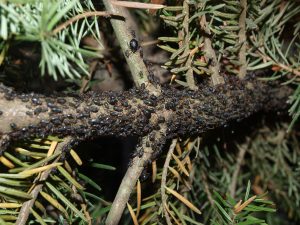 | Montalva, C; Barta, M; Rojas, E; Gutiérez, M; Valenzuela, E Neozygites species associated with aphids in Chile: current status and new reports Journal Article Mycotaxon, 129 (2), pp. 233-245, 2014, ISSN: 2154-8889. @article{Montalva2014, title = {\textit{Neozygites} species associated with aphids in Chile: current status and new reports}, author = {C. Montalva and M. Barta and E. Rojas and M. Gutiérez and E. Valenzuela}, url = {http://www.ingentaconnect.com/content/mtax/mt/2015/00000129/00000002/art00005}, doi = {DOI: https://doi.org/10.5248/129.233}, issn = {2154-8889}, year = {2014}, date = {2014-10-01}, journal = {Mycotaxon}, volume = {129}, number = {2}, pages = {233-245}, abstract = {Three species of Neozygites were recorded during a 2007–13 survey of the occurrence of the genus on aphids in Chile. Neozygites osornensis is known from recent studies, and N. fresenii and N. cinarae are reported as new records for Chile. Neozygites lageniformis, which was not found during the survey, had been recorded previously in Chile. Morphological descriptions, symptoms on infected insects, host spectrum, and geographical distribution of all four species are presented, and a key to Neozygites species associated with aphids in Chile is included. These fungi, which are important natural enemies of aphids, may be considered for future aphid pest control.}, keywords = {}, pubstate = {published}, tppubtype = {article} } Three species of Neozygites were recorded during a 2007–13 survey of the occurrence of the genus on aphids in Chile. Neozygites osornensis is known from recent studies, and N. fresenii and N. cinarae are reported as new records for Chile. Neozygites lageniformis, which was not found during the survey, had been recorded previously in Chile. Morphological descriptions, symptoms on infected insects, host spectrum, and geographical distribution of all four species are presented, and a key to Neozygites species associated with aphids in Chile is included. These fungi, which are important natural enemies of aphids, may be considered for future aphid pest control. |
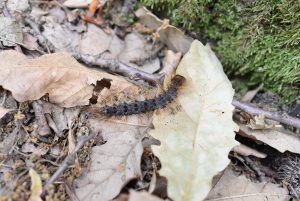 | Zúbrik, M; Barta, M; Pilarska, D; Goertz, D; Úradník, M; Galko, J; Vakula, J; Gubka, A; Rella, S; Kunca, A First record of Entomophaga maimaiga (Entomophthorales: Entomophthoraceae) in Slovakia Journal Article Biocontrol Science and Technology, 24 (6), pp. 710-714, 2014, ISSN: 1360-0478. @article{Zúbrik2014, title = {First record of \textit{Entomophaga maimaiga} (Entomophthorales: Entomophthoraceae) in Slovakia}, author = {M. Zúbrik and M. Barta and D. Pilarska and D. Goertz and M. Úradník and J. Galko and J. Vakula and A. Gubka and S. Rella and A. Kunca}, url = {http://www.tandfonline.com/doi/full/10.1080/09583157.2014.883362?scroll=top&needAccess=true}, doi = {http://dx.doi.org/10.1080/09583157.2014.883362}, issn = {1360-0478}, year = {2014}, date = {2014-01-07}, journal = {Biocontrol Science and Technology}, volume = {24}, number = {6}, pages = {710-714}, abstract = {The entomopathogenic fungus Entomophaga maimaiga was found for the first time in Slovakia in 2013. Late instar larvae of gypsy moth, Lymantria dispar, from two sites with different population densities were dissected to evaluate the presence of pathogens. The presence of conidia and resting spores of E. maimaiga in gypsy moth cadavers was confirmed from both sites.}, keywords = {}, pubstate = {published}, tppubtype = {article} } The entomopathogenic fungus Entomophaga maimaiga was found for the first time in Slovakia in 2013. Late instar larvae of gypsy moth, Lymantria dispar, from two sites with different population densities were dissected to evaluate the presence of pathogens. The presence of conidia and resting spores of E. maimaiga in gypsy moth cadavers was confirmed from both sites. |
2013 |
|
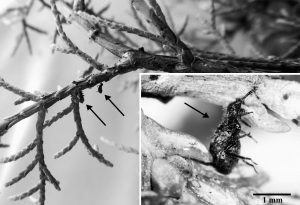 | Retamal, M; Barta, M; Pérez, E R; Flores, E V Neozygites osornensis sp. nov., a fungal species causing mortality to the cypress aphid Cinara cupressi in Chile Journal Article Mycologia, 105 (3), pp. 661 – 669, 2013, ISSN: 1557-2536. @article{Retamal2013, title = {\textit{Neozygites osornensis} sp. nov., a fungal species causing mortality to the cypress aphid \textit{Cinara cupressi} in Chile}, author = {M. Retamal and M. Barta and E. R. Pérez and E. V. Flores}, url = {http://www.tandfonline.com/doi/full/10.3852/12-125}, doi = {DOI: 10.3852/12-125}, issn = {1557-2536}, year = {2013}, date = {2013-01-20}, journal = {Mycologia}, volume = {105}, number = {3}, pages = {661 – 669}, abstract = {An entomophthoralean fungus causing epizootics in populations of the cypress aphid, \textit{Cinara cupressi} Buckton, in Chile is described as a new species, \textit{Neozygites osornensis} Montalva et Barta. The aphid pathogen is described based on morphological characters. An exhaustive description, illustrations and a comparison with closely related species are provided. The fungus differs from similar \textit{Neozygites} species by smaller hyphal bodies, nuclei, primary conidia, capilliconidia and capilliphores and by noticeably different shape of capilliconidia. A key to aphid-pathogenic species of \textit{Neozygites} is also included.}, keywords = {}, pubstate = {published}, tppubtype = {article} } An entomophthoralean fungus causing epizootics in populations of the cypress aphid, Cinara cupressi Buckton, in Chile is described as a new species, Neozygites osornensis Montalva et Barta. The aphid pathogen is described based on morphological characters. An exhaustive description, illustrations and a comparison with closely related species are provided. The fungus differs from similar Neozygites species by smaller hyphal bodies, nuclei, primary conidia, capilliconidia and capilliphores and by noticeably different shape of capilliconidia. A key to aphid-pathogenic species of Neozygites is also included. |
2011 |
|
Mahmoud, M F; Barta, M Horticultural science (Prague), 38 (2), pp. 54–62, 2011, ISSN: 1805-9333. @article{Mahmoud2011, title = {Effect of gamma radiation on the male sterility and other quality parameters of peach fruit fly, \textit{Bactrocera zonata} (Saunders) (Diptera: Tephritidae)}, author = {M. F. Mahmoud and M. Barta}, url = {http://www.agriculturejournals.cz/publicFiles/39310.pdf}, issn = {1805-9333}, year = {2011}, date = {2011-01-01}, journal = {Horticultural science (Prague)}, volume = {38}, number = {2}, pages = {54–62}, abstract = {Bactrocera zonata, a serious pest of fruits in many parts of the world, has recently been recorded in Northern Africa. Even though it has not been introduced to the European continent yet, a strong emphasis is being placed on developing effective measures to suppress this pest and to prevent it from establishing in neighbouring European countries. The sterile insect technique is widely used in integrated programmes against tephritid fruit flies and, in this paper, quality parameters of irradiated B. zonata were evaluated for possible use of sterile insect technique within the management of this pest. Pupae were irradiated (60Co) 48 h before adult emergence (in an air atmosphere) with doses of 10, 30, 50, 70 or 90 Gy. While adult emergence and egg hatch decreased with increasing dose, no significant differences in female fecundity were found among doses. Exposure of pupae to 90 Gy resulted in a total sterility of eggs laid by non-treated females crossed with treated males. Only insignificant difference in the radiation effect on female fecundity was found. Moderate effects on sex ratio and size were recorded, as they decreased gradually by increasing doses. No considerable effect on flying capability was observed, but generally, the percentage of fliers decreased with increasing radiation doses. Fried’s competitiveness values of treated males (30 and 70 Gy) suggest that irradiated males compete successfully with non-irradiated ones.}, keywords = {}, pubstate = {published}, tppubtype = {article} } Bactrocera zonata, a serious pest of fruits in many parts of the world, has recently been recorded in Northern Africa. Even though it has not been introduced to the European continent yet, a strong emphasis is being placed on developing effective measures to suppress this pest and to prevent it from establishing in neighbouring European countries. The sterile insect technique is widely used in integrated programmes against tephritid fruit flies and, in this paper, quality parameters of irradiated B. zonata were evaluated for possible use of sterile insect technique within the management of this pest. Pupae were irradiated (60Co) 48 h before adult emergence (in an air atmosphere) with doses of 10, 30, 50, 70 or 90 Gy. While adult emergence and egg hatch decreased with increasing dose, no significant differences in female fecundity were found among doses. Exposure of pupae to 90 Gy resulted in a total sterility of eggs laid by non-treated females crossed with treated males. Only insignificant difference in the radiation effect on female fecundity was found. Moderate effects on sex ratio and size were recorded, as they decreased gradually by increasing doses. No considerable effect on flying capability was observed, but generally, the percentage of fliers decreased with increasing radiation doses. Fried’s competitiveness values of treated males (30 and 70 Gy) suggest that irradiated males compete successfully with non-irradiated ones. | |
2010 |
|
Rahman, K M A; Barta, M; Cagáň, Ľ Effects of combining Beauveria bassiana and Nosema pyrausta on the mortality of Ostrinia nubilalis Journal Article Central European Journal of Biology, 5 (4), pp. 472–480, 2010, ISSN: 2391-5412. @article{Rahman2010, title = {Effects of combining \textit{Beauveria bassiana} and \textit{Nosema pyrausta} on the mortality of \textit{Ostrinia nubilalis}}, author = {K. M. A. Rahman and M. Barta and Ľ. Cagáň}, url = {https://www.degruyter.com/view/j/biol.2010.5.issue-4/s11535-010-0035-z/s11535-010-0035-z.xml}, doi = {DOI: 10.2478/s11535-010-0035-z}, issn = {2391-5412}, year = {2010}, date = {2010-08-01}, journal = {Central European Journal of Biology}, volume = {5}, number = {4}, pages = {472–480}, abstract = {We tested the combined effect of the fungus Beauveria bassiana and the microsporidium Nosema pyrausta on the European corn borer larvae, Ostrinia nubilalis, in the laboratory. The first instar of O. nubilalis larvae was the most sensitive to the B. bassiana infection followed by the fifth, second, third, and fourth instar (LC50s were 4.91, 6.67, 7.13, 9.15, and 6.51 x 105 conidia/ml for the first to fifth instars, respectively). Mortality of each instar increases positively with concentration of conidia. When B. bassiana and N. pyrausta were used in combination, mortality increased significantly in all instars. Relative to the B. bassiana treatment alone, the B. bassiana + N. pyrausta treatment decreased the LC50s by 42.16%, 37.63%, 21.60%, 27.11%, and 33.95% for the first to fifth instars, respectively. The combined effects of the two pathogens were mostly additive. However, at the two highest concentrations the pathogens interacted synergistically in the first and second instar. Individuals that survived the B. bassiana and B. bassiana + N. pyrausta treatments and developed into adults had significantly shorter lifespans and females oviposited fewer eggs than non-exposed insects. The effects on the longevity and the egg production were most pronounced at high concentration of B. bassiana conidia.}, keywords = {}, pubstate = {published}, tppubtype = {article} } We tested the combined effect of the fungus Beauveria bassiana and the microsporidium Nosema pyrausta on the European corn borer larvae, Ostrinia nubilalis, in the laboratory. The first instar of O. nubilalis larvae was the most sensitive to the B. bassiana infection followed by the fifth, second, third, and fourth instar (LC50s were 4.91, 6.67, 7.13, 9.15, and 6.51 x 105 conidia/ml for the first to fifth instars, respectively). Mortality of each instar increases positively with concentration of conidia. When B. bassiana and N. pyrausta were used in combination, mortality increased significantly in all instars. Relative to the B. bassiana treatment alone, the B. bassiana + N. pyrausta treatment decreased the LC50s by 42.16%, 37.63%, 21.60%, 27.11%, and 33.95% for the first to fifth instars, respectively. The combined effects of the two pathogens were mostly additive. However, at the two highest concentrations the pathogens interacted synergistically in the first and second instar. Individuals that survived the B. bassiana and B. bassiana + N. pyrausta treatments and developed into adults had significantly shorter lifespans and females oviposited fewer eggs than non-exposed insects. The effects on the longevity and the egg production were most pronounced at high concentration of B. bassiana conidia. | |
Shoaib, M A; Mahmoud, M F; Loutfy, N; Tawfic, M A; Barta, M Effect of botanical insecticide Nimbecidine® on food consumption and egg hatchability of the terrestrial snail Monacha obstructa Journal Article Journal of Pest Science, 83 (1), pp. 27–32, 2010, ISSN: 1612-4758. @article{Shoaib2010, title = {Effect of botanical insecticide Nimbecidine® on food consumption and egg hatchability of the terrestrial snail \textit{Monacha obstructa}}, author = {M. A. Shoaib and M. F. Mahmoud and N. Loutfy and M. A. Tawfic and M. Barta}, url = {https://link.springer.com/article/10.1007%2Fs10340-009-0265-x?LI=true}, doi = {doi:10.1007/s10340-009-0265-x}, issn = {1612-4758}, year = {2010}, date = {2010-02-01}, journal = {Journal of Pest Science}, volume = {83}, number = {1}, pages = {27–32}, abstract = {In the laboratory, a commercial neem-based insecticide—Nimbecidine®—was evaluated as a potential pest management tool for the terrestrial snail, \textit{Monacha obstructa} (Pfeiffer, 1842) (\textit{Hygromiidae}). Effects of different concentrations of the botanical insecticide on food consumption and egg hatchability of the terrestrial snail were studied. Generally, food consumption of immature and adult snails decreased as the concentrations of Nimbecidine® increased. At the highest concentration (10 ml/l), the snails avoided contacting with food completely. The food intake of immature individuals was significantly (p < 0.05) more affected by the Nimbecidine® treatment (at 1.25 ml/l) than that of adults. LC50 of Nimbecidine® for the treated eggs was 2.18 ml/l, and eggs failed to hatch at concentration of 10 ml/l. Nimbecidine® showed sufficient biological activity against the food consumption and eggs viability of \textit{M. obstructa}, thus the preparation has a potential to protect field crops from this pest snails.}, keywords = {}, pubstate = {published}, tppubtype = {article} } In the laboratory, a commercial neem-based insecticide—Nimbecidine®—was evaluated as a potential pest management tool for the terrestrial snail, Monacha obstructa (Pfeiffer, 1842) (Hygromiidae). Effects of different concentrations of the botanical insecticide on food consumption and egg hatchability of the terrestrial snail were studied. Generally, food consumption of immature and adult snails decreased as the concentrations of Nimbecidine® increased. At the highest concentration (10 ml/l), the snails avoided contacting with food completely. The food intake of immature individuals was significantly (p < 0.05) more affected by the Nimbecidine® treatment (at 1.25 ml/l) than that of adults. LC50 of Nimbecidine® for the treated eggs was 2.18 ml/l, and eggs failed to hatch at concentration of 10 ml/l. Nimbecidine® showed sufficient biological activity against the food consumption and eggs viability of M. obstructa, thus the preparation has a potential to protect field crops from this pest snails. | |
